Finest Intermediate Skis of 2024-2025
Intermediate-level skis hit a candy spot out there: robust sufficient for carving however fairly mild and simple to manage. They’re an incredible match for a large swath of skiers, from these with just a few seasons’ expertise who can confidently hyperlink activates most groomed terrain to quick learners progressing their off-piste powder and variable snow expertise. Moreover, these mid-range designs have comparable enchantment for lifelong skiers preferring relaxed cruising over a extra aggressive type. Beneath, we break down our favourite intermediate skis for the 2024-2025 season, which embody on-trail carvers, versatile all-mountain fashions, and floaty designs for comfortable snow. For extra info on choosing the proper ski, see our comparability desk and shopping for recommendation beneath the picks.
Editor’s word: We up to date this information on October 16, 2024, to revamp our listing with 2024-2025 fashions. We additionally included particulars about our testing course of and swept the information to make sure all info—together with specs, costs, and topsheet designs—was present on the time of publishing.
Our Crew’s Intermediate Ski Picks
Finest Total Intermediate Ski
1. Atomic Bent 90 ($550)
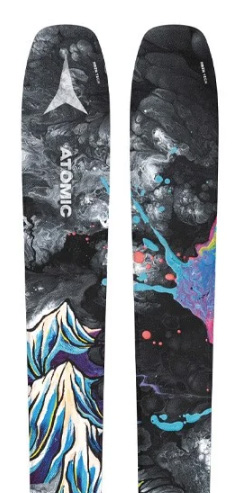 Capacity stage: Intermediate to superior
Capacity stage: Intermediate to superior
Dimensions: 119-90-109mm (175cm)
Different widths: 85, 100, 110mm
What we like: An especially versatile ski that’s mild, straightforward to show, and has nice all-mountain efficiency.
What we don’t: The all-wood core sacrifices some stability.
Atomic’s Bent line is a traditional, tracing its roots to the legendary Bent Chetler powder ski. On the narrower, all-mountain finish of the spectrum is the Bent 90, which is an especially approachable ski that appeals to rising intermediates all the way in which as much as seasoned freeriders. The key sauce is its light-weight building, easy-to-drive nature, and versatile profile and waist width that excel in most snow circumstances. On groomed runs, the rockered tip and tail require minimal effort to provoke and launch from a flip, however there’s loads of camber underfoot for dependable edge grip to carve your method down the hill. With no steel within the building and a poplar wooden core, the ski is light-weight and playful—nice attributes for these dipping their toes into the bushes or comfortable snow. Tack on a really approachable $550 price ticket, and the Bent 90 is a standout all-rounder for intermediates.
The Bent 90 is a good possibility for on- and off-trail skiers who prioritize turnability, management, and a low weight, however the lack of steel within the ski’s core will likely be a limiting issue for extra aggressive riders. The Bent can really feel just a little skittish at excessive speeds, and the low weight means it could possibly get knocked round a bit in chopped-up or very agency circumstances. You probably have ambitions of laying down GS-style turns or blasting by way of crud, a sturdier design just like the Völkl Mantra 88 (nice for groomers) or Blizzard Rustler 10 (a wider all-mountain ripper) beneath are higher choices. However these cons arguably apply extra to superior or expert-level skiers. As a primary “actual” pair of skis, the Bent 90’s extremely versatile nature and affordable value make it really laborious to beat.
See the Atomic Bent 90
Finest Ski for Progressing Intermediates
2. Blizzard Rustler 10 ($800)
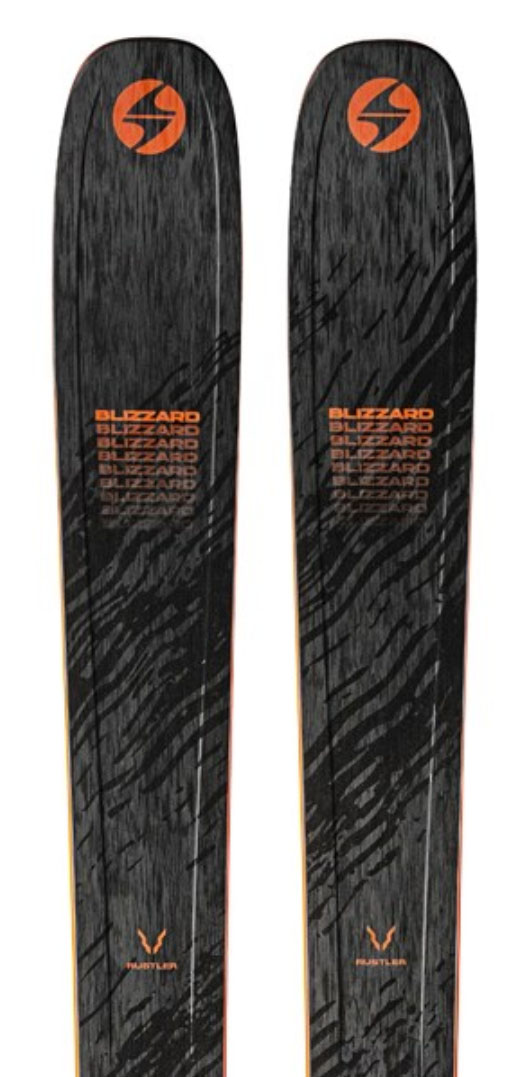 Capacity stage: Intermediate to professional
Capacity stage: Intermediate to professional
Dimensions: 134-102-123mm (180cm)
Different widths: 96 (Rustler 9), 112mm (Rustler 11)
What we like: A superb do-everything ski that’s steady on hardpack, floats in comfortable snow, and plows by way of crud.
What we don’t: Not as forgiving or straightforward to drive because the Bent above; expensive.
The intermediate class is wide-ranging, and for extra aggressive riders who’re dedicated to progressing their expertise—on each groomed runs and in comfortable snow—the Blizzard Rustler 10 is a implausible design. Revamped final season with larger precision and stability, the newest Rustler can cost on hardpack due to Titanal within the tip, tail, and perimeter and a comparatively lengthy efficient edge. Nevertheless, it’s additionally impressively mild and has sufficient flex to make gradual, cruisey turns really feel clean and intuitive. Off path, the Rustler 10 floats properly in boot-top powder and is nimble sufficient by way of the bushes. Moreover, the ladies’s model of the ski, the Blizzard Sheeva 10, has an analogous construct and efficiency as its unisex counterpart, with latest updates together with a barely lighter and extra versatile building (to not point out a good looking topsheet).
Regardless of its approachability, the Rustler 10 is just not a newbie ski and requires a powerful driver within the bumps and chop. It’s additionally a fairly vast design at 102 millimeters on the waist (a big 12mm greater than our top-rated Bent 90) and might really feel ungainly in tight spots if you happen to’re not snowboarding with confidence. After which there’s the value: $800 is the going fee of a top-quality ski as of late, and the Rustler has a excessive efficiency threshold, however it’s nonetheless a big funding inside the intermediate class. Of word: Blizzard additionally makes the Rustler 9 ($750), which has an analogous building as the ten however in a trimmed-down width (96-98mm relying on size) and with just a little extra of a hardpack slant for high-speed carving… Learn in-depth Rustler 10 evaluation
See the Blizzard Rustler 10 See the Ladies’s Blizzard Sheeva 10
Finest Carving Ski for Intermediates
3. Völkl Mantra 88 ($750)
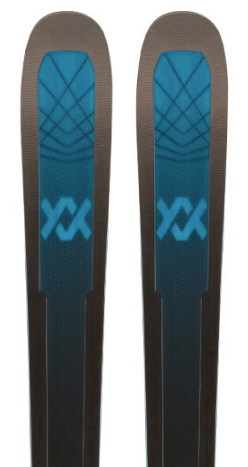 Capacity stage: Intermediate to superior
Capacity stage: Intermediate to superior
Dimensions: 129-88-113mm
Different widths: 96, 102, 108mm
What we like: Extraordinarily clean on groomers with an incredible stability of stiffness and management.
What we don’t: A little bit slim for areas with vital snowfall.
Skiers on the East Coast and those that largely follow groomed trails out West will discover so much to like with the Völkl Mantra 88 (previously generally known as the Kendo 88) and its girls’s-specific counterpart, the Secret 88 (which replaces the Kenja 88). Though this widespread ski has been criticized previously for being fairly stiff and unforgiving, Völkl addressed this with the present model. They now tailor the Titanal (steel) content material within the ski based on size, which signifies that longer skis have extra Titanal and are due to this fact stiffer, heavier, and better-suited to greater and extra highly effective skiers. In the meantime, shorter lengths have much less Titanal, which makes them lighter and simpler to deal with for smaller, lighter, or much less highly effective riders (nice for intermediates). And on a groomed path, the Mantra and Secret are an absolute deal with, reacting shortly to inputs, holding a really dependable edge, and providing a satisfying quantity of pop between turns.
Whereas the Mantra has some all-mountain versatility with a comparatively vast shovel and early rise within the tip and tail, it’s finest suited for many who are primarily snowboarding groomed trails. Regardless of having an analogous waist width because the Bent 90 above and K2’s Mindbender 90C beneath, the Mantra 88 has a extra buttoned-down building that may’t match these skis’ mild and surfy personalities. That mentioned, the Mantra 88 is difficult to prime relating to frontside efficiency at nearly any pace. Should you reside in an space with comparatively low annual snowfall or anticipate placing in most of your time on path—and desire a ski you can develop into and excellent your carving method—the Mantra 88 is a best choice.
See the Völkl Mantra 88 See the Ladies’s Völkl Secret 88
Finest Powder Ski for Intermediates
4. Salomon QST 106 ($750)
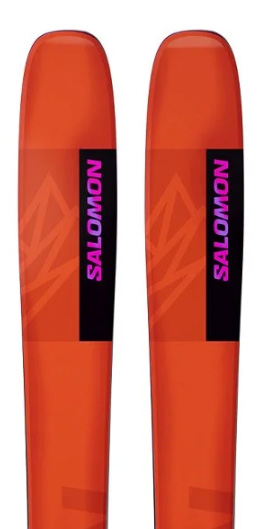 Capacity stage: Intermediate to superior
Capacity stage: Intermediate to superior
Dimensions: 139-106-126mm (181cm)
Different widths: 92, 98mm
What we like: An all-mountain powder ski that thrives off piste.
What we don’t: Too vast for many who primarily follow groomed runs.
Transitioning from a carving specialist to a powder hound, Salomon’s QST 106 has been a longtime favourite of ours within the comfortable stuff. Should you’re primarily based within the Western U.S. and looking for a single ski that spans the all-mountain and powder ski classes, look no additional. The QST is constructed with a poplar wooden core, with a layer of woven carbon and flax so as to add stability and dampness whereas conserving the ski mild. Moreover, a Titanal insert underfoot enhances energy switch and edge-to-edge management when carving activates agency snow. The end result: A ski that’s a blast in recent pow, can energy by way of crud, and can maintain its edge if you happen to drop onto a slope that’s firmer than you had been anticipating. To sum it up, the QST can function a powder ski if you have already got a narrower go-to for groomer days, or it may be your day by day driver if you happen to’re constantly snowboarding recent snow.
In fact, with a 106-millimeter waist, this ski gained’t provide the identical edge-to-edge efficiency as a narrower design just like the Völkl Mantra above. Moreover, whereas the QST is acceptable for superior intermediate skiers, it’s an excessive amount of ski for many who are simply starting to enterprise off path. If that’s you, we advocate the Salomon QST 92 as a extra forgiving all-mountain possibility or the Atomic Bent 90 above (or wider Bent 100) that’s loads playful however extra versatile. Lastly, whereas the QST 106 is a unisex ski, Salomon affords a girls’s-specific model within the QST Stella 106, which options the identical construct and form however with totally different graphics and obtainable lengths.
See the Salomon QST 106 See the Ladies’s QST Stella 106
Finest Ladies’s-Particular Intermediate Ski
5. 4FRNT MSP CC ($769)
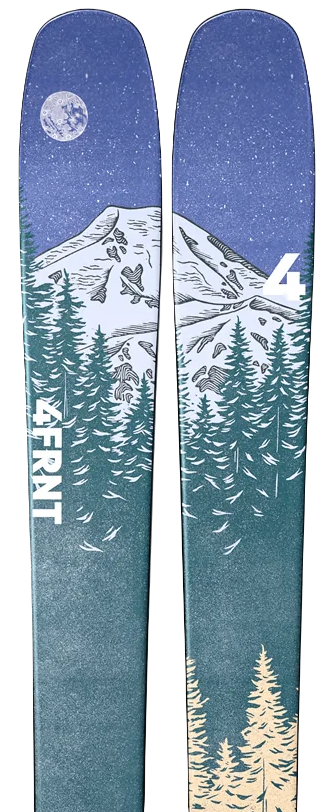 Capacity stage: Intermediate to superior
Capacity stage: Intermediate to superior
Dimensions: 132-99-121mm (165cm)
Different widths: 91, 107mm (unisex)
What we like: Intuitive really feel is confidence-inspiring no matter capability stage.
What we don’t: A bit restricted to Western U.S. frontside slopes.
A well-liked girls’s-specific design, 4FRNT’s MSP CC is a day by day driver that performs at its finest on groomed runs and if you’re dipping on and off the path. The “CC” within the identify is brief for Contour Core expertise: 4FRNT included a small stabilizer towards the rear of the ski to match the way in which most ladies generate energy by way of a flip (through their hips, in comparison with males who usually drive from the torso). This makes it simpler to place stress on the shovel of the ski, permitting riders to provoke turns extra simply and with extra management. Mixed with a layer of Titanal on all sides of the wooden core and a comparatively quick flip radius (15.8m for the 165cm size), the MSP CC affords very poppy and intuitive efficiency that evokes confidence everywhere in the mountain. And talking of the wooden core, 4FRNT switched from mild and snappy poplar to aspen and maple for 2024-2025, leading to a noticeable enhance in stability and management whereas nonetheless sustaining nice responsiveness.
Given the 4FRNT MSP CC’s broad enchantment and constant following, we want it had been provided in additional lengths. To be clear, the present sizing choices (159, 165, or 171cm) cowl a good vary, however including a pair extra lengths within the mid to higher 170s and low 150s would higher accommodate tall and quick riders, respectively. It’s additionally value noting that the CC mannequin right here is simply made with a 99-millimeter waist, though the unisex MSP (with out the ladies’s-specific core expertise) is offered in widths all the way down to 91 millimeters for many who spend most of their time on path.
See the Ladies’s 4FRNT MSP CC See the 4FRNT MSP 99
Our Favourite Playful Intermediate Ski
6. J Skis The Allplay ($699)
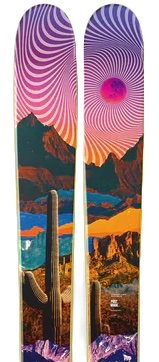 Capacity stage: Intermediate to professional
Capacity stage: Intermediate to professional
Dimensions: 122-97-118mm
Different widths: 90 (The Joyride), 104mm (The Trip)
What we like: An excellent playful ski that’s been up to date for improved carving efficiency.
What we don’t: Restricted-edition skis promote out shortly; not constructed for laborious charging.
Like many skiers, we’ve been followers of J Skis’ The Allplay for years and particularly love the ski’s playfulness everywhere in the mountain (therefore its identify)—within the park, on pure terrain options, and browsing or smearing in comfortable snow. The second ski firm based by Jason Levinthal (he additionally began Line Skis), this distinctive and comparatively new model focuses their vitality on small batches of limited-edition, eye-catching topsheets which can be created in collaboration with artists. As soon as the season’s choices are offered, they’re unavailable till the next 12 months (or gone perpetually). J Skis affords three collections (for charging, enjoying, and touring) that embody 9 totally different fashions, plus a ski blade—which is a class and subject all its personal. Inside the “Play” assortment, the model’s flagship ski, The Allplay, sits on the heart with a middle-of-the-road 97-millimeter waist.
Intermediate by way of superior skiers who really like to smear, slide, and surf slightly than cost may have little to complain about with The Allplay. This can be a premium ski constructed with a maple wooden core, aspen on the suggestions and tails for diminished swing weight, and fiberglass and carbon fiber that add pop and vitality return. And final season, J Skis tweaked the design with a barely narrower waist and refined profile to enhance the ski’s on-piste efficiency. That mentioned, if you happen to’re extra centered on dialing in your carving method, desire a ski that may maintain a stable edge, and like to maintain chatter to a minimal, it’s finest to look to the opposite choices on our listing.
See the J Skis The Allplay
Better of the Relaxation
7. Nordica Enforcer 94 ($750)
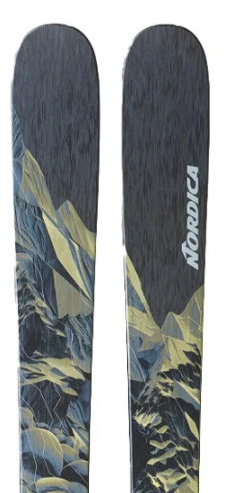 Capacity stage: Intermediate to professional
Capacity stage: Intermediate to professional
Dimensions: 127.5-94-115.5mm (179cm)
Different widths: 89, 99, 104mm
What we like: Steady at pace and confidence-inspiring in a variety of circumstances.
What we don’t: Requires a assured skier on the helm.
A Switchback favourite, Nordica’s Enforcer and girls’s-specific Santa Ana are each at present ranked on the prime of our all-mountain ski guides. These with a watch for figuring out topsheet designs within the raise line can attest that they’re everywhere in the hill, and for good cause: The skis are poppy and highly effective, steady at pace, and supply excellent grip and management on agency snow. Each the Enforcer and Santa Ana strains provide a spread of widths, with sub-90-millimeter choices which can be higher suited to carving and wider, 100-plus-millimeter skis that really feel floatier and extra playful in powder. As with lots of the skis on this information, we chosen the well-rounded Enforcer 94 as our coast-to-coast choose for intermediates who get pleasure from each on- and off-trail forays.
For a high-end ski with a good quantity of steel within the building, we’ve been actually pleased with the Enforcer’s versatility. Its most up-to-date replace eliminated heavy plastic within the construct and prolonged the wooden core into the tip and tail to lighten it and make it simpler to show. For an intermediate rider, this interprets to smoother flip initiation and solely highlights the skis’ impressively intuitive and predictable nature. That mentioned, this ski requires a assured pilot who’s keen to drive it, particularly as you get into extra variable snow. In contrast with others on this listing, just like the Atomic Bent above and Völkl Blaze beneath, the Enforcer is a comparatively heavy and highly effective design that may overwhelm a timid skier. Due to this fact, we advocate it primarily for shortly progressing intermediates in search of a long-term funding… Learn in-depth evaluation (prior model)
See the Nordica Enforcer 94 See the Ladies’s Nordica Santa Ana 92
8. Völkl Blaze 86 ($600)
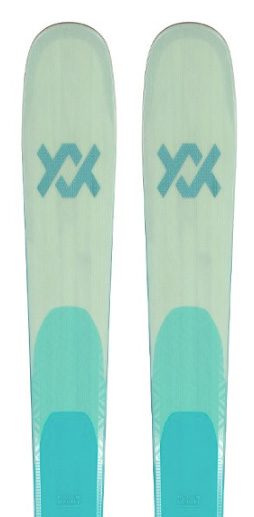 Capacity stage: Intermediate to superior
Capacity stage: Intermediate to superior
Dimensions: 129-86-111mm
Different widths: 94, 104, 114mm
What we like: A enjoyable and versatile ski that has enchantment for each kind of skier.
What we don’t: Too slim to be a day by day driver on the West Coast.
A a lot lighter possibility than the Nordica Enforcer above (by about 3 lb. for the pair) is the Völkl Blaze 86, which doubles as an appropriate crossover ski for each inbounds use and touring. The Blaze is constructed with a easy ethos: You get a poplar and beech wooden core that extends from tip to tail, a layer of glass underfoot, and an elastic TPU materials on the ends for added stability and management. Moreover, whereas most skis have a single flip radius, the Blaze options Völkl’s 3D radius sidecut (shared with the Mantra 88 above) that’s longer on the tip and tail and shorter within the heart. This interprets to a nimble and agile ski that may easily transition between lengthy, medium, and small tight turns at nearly any pace.
The first limitation to the Blaze 86 is its slim waist, particularly for West Coast skiers (stepping as much as the 94mm mannequin is an efficient guess and can get you comparable on-trail efficiency at the price of some added weight). Moreover, the very mild construct provides it a chattery and unreliable really feel when the pace ramps up and the snow circumstances worsen. It’s laborious to actually dig into the sides in agency snow and ice, and the ski can get tossed round in chunder. In the long run, the Atomic Bent 90 above will get the sting because the superior all-rounder whereas remaining equally agile. However the Blaze is undoubtedly a enjoyable possibility that’s notably interesting if you wish to combine within the occasional inbounds ski tour.
See the Völkl Blaze 86
9. K2 Mindbender 90C ($550)
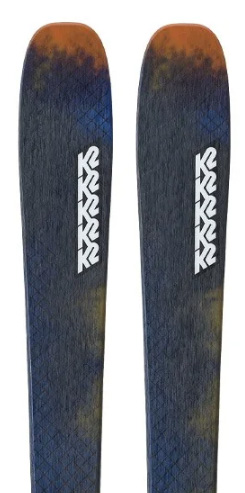 Capacity stage: Newbie to superior
Capacity stage: Newbie to superior
Dimensions: 132-90-117mm
Different widths: 85, 96, 106, 116mm
What we like: An approachable and forgiving all-mountain ski at an incredible worth.
What we don’t: So-so stability on hardpack.
A part of the model’s freeride assortment, the K2 Mindbender 90C (obtainable in each unisex and girls’s variations) is a confidence-builder for intermediates who’re snowboarding on and off the path. Constructed with carbon and wooden—and missing steel laminates—this ski has a lightness and suppleness that make it maneuverable with out making you’re employed or assume too laborious. K2 additionally makes use of a fiber braiding design that locations extra rigidity underfoot (useful for precision and management) and larger flexibility within the tip and tail for simpler flip initiation and launch. There’s a stiffer model of the Mindbender obtainable—the Ti Collection, which is constructed with steel and affords extra stability—however that ski loses the forgiving nature of the 90C that we like a lot for progressing learners and intermediates.
As with many core all-mountain collections, the Mindbender sequence contains a number of waist widths, beginning with an entry-level 85-millimeter possibility. At $450, it’s an incredible worth for a primary setup, though you miss out on the carbon reinforcements of the $100-pricier 90C. As such, we predict it’s a more sensible choice for newbie skiers who’re getting the dangle of linking parallel turns and simply beginning to discover ungroomed terrain (which is why you’ll additionally discover it on our newbie skis round-up). On the different finish of the spectrum, 96- and 106-millimeter Mindbender Cs spherical out the all-mountain class. Be aware: As width will increase, intermediate skiers will likely be more and more challenged with edge-to-edge management, in addition to the facility and confidence required to wield a bigger ski, which is why we landed on the 90C as the very best center floor.
See the K2 Mindbender 90C See the Ladies’s K2 Mindbender 90C
10. Head Kore 93 ($699)
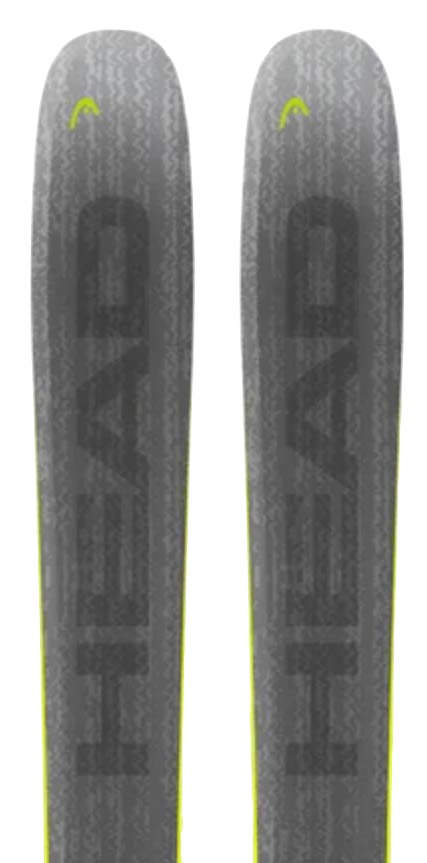 Capacity stage: Intermediate to professional
Capacity stage: Intermediate to professional
Dimensions: 133-93-115mm (177cm)
Different widths: 87, 99, 105, 111, 117mm
What we like: Mild construct helps with turnability and management; nonetheless has a whole lot of energy on faucet.
What we don’t: Stability suffers with the drop in weight.
At its launch, Head’s Kore was a little bit of a revelation: The ski provided each energy and grip for laborious chargers with the low weight of a hybrid downhill/touring design. What the unique lacked, nonetheless, was a forgiving trip—it was a bit punishing in chop and for much less assured skiers—which Head addressed with their most up-to-date model. The present Kore lands in a fascinating area for intermediates, with a low swing weight that’s not fatiguing or harsh to these nonetheless studying the ropes however a fairly excessive efficiency ceiling when you’re able to open the faucets. And that flickable nature interprets to nice all-mountain versatility: The Kore 93 dances properly within the bushes and exceeded expectations for the width in boot-top powder.
How does the Kore evaluate with the choices above? Should you desire stability and dampness, we advocate Nordica’s Enforcer, which has extra steel within the construct and a sturdier all-around really feel. Alternatively, our top-rated Atomic Bent has extra flex and is less complicated to handle (an enormous plus as you construct up expertise each on and off path). However as a center floor between the 2, the Kore has a complete lot of enchantment: It’s stiffer and quicker than the Atomic however extra playful and happier to show shortly than the Nordica. For the suitable consumer—one instance is a progressing intermediate who has all-mountain aspirations—the Kore generally is a nice alternative… Learn in-depth evaluation (prior model)
See the Head Kore 93 See the Ladies’s Head Kore 91
11. Icelantic Pioneer 86 ($749)
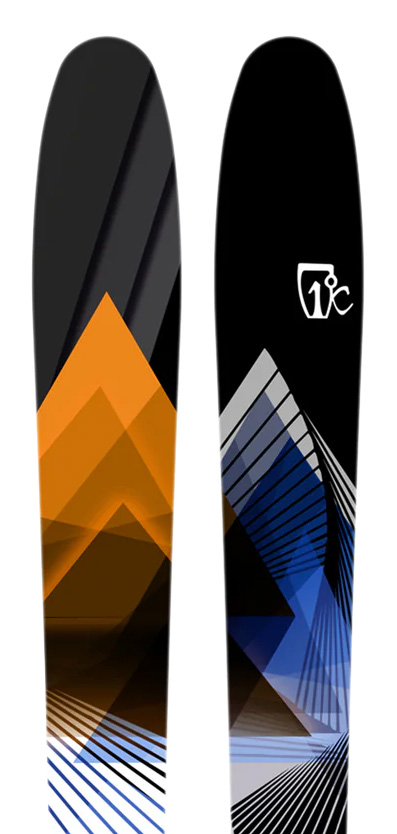 Capacity stage: Intermediate to superior
Capacity stage: Intermediate to superior
Dimensions: 121-86-108mm
Different widths: 96, 109mm
What we like: Among the many finest for bumps and tight turns.
What we don’t: Much less versatile out West and expensive for the width (though it’s handmade in CO).
In case your best winter day entails fast, tight turns and lapping bump strains, the Icelantic Pioneer 86 needs to be excessive in your listing. This can be a ski that’s constructed for frontside energy and edge-to-edge management. It’s constructed with a full of life poplar core and fiberglass for added stiffness and diminished chatter, in addition to metal edges that can show sturdy if you happen to’re hitting rails within the park. With a comparatively slim waist and 5 millimeters of camber underfoot, the Pioneer has pop and rebound that come to life in moguls and whereas carving on agency snow. It’s a nimble ski and a super alternative for each the East Coast and West Coast frontside, although it’s much less steady than the Nordica Enforcer 94 above at pace and gained’t float off piste in addition to a wider and extra versatile design.
Icelantic makes their skis by hand of their store in Golden, Colorado, and their topsheet designs are all the time showstoppers with lovely, eye-catching art work. You do pay a premium—at $749, the Pioneer is almost as expensive as many wider and extra all-mountain-friendly designs—and the size choices are a bit restricted and extra spaced-out than we desire (166, 174, and 182cm). But when you may get match, many will discover the high-end look value the additional value. Rounding out the Pioneer assortment, there are two extra widths: The Pioneer 96 offers you extra all-mountain versatility whereas sacrificing some stability on piste, whereas the 109-millimeter width will float the very best in powder (at the price of edge-to-edge precision and nimble maneuvering on piste). Lastly, Icelantic’s Riveter assortment is their girls’s-specific all-mountain line with comparable constructions and form profiles.
See the Icelantic Pioneer 86 See the Ladies’s Icelantic Riveter 85
12. Dynastar M-Cross 78 Xpress ($500)
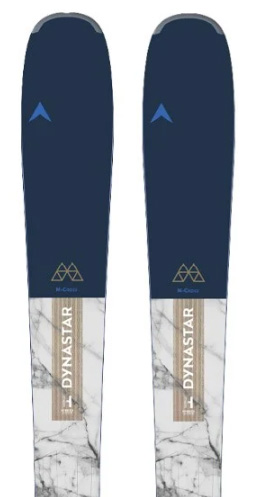 Capacity stage: Newbie to intermediate
Capacity stage: Newbie to intermediate
Dimensions: 124-78-110mm
Different widths: 82, 88mm
What we like: An awesome worth for rising intermediates who’re sticking to the paths.
What we don’t: Decrease efficiency ceiling than the pricier choices on the listing.
Debuted final season, Dynastar launched its M-Cross sequence to fill the hole between their all-mountain freeride and race-inspired frontside collections. We just like the forgiveness and uncompromising grip of the M-Cross 78 Xpress, which is the narrowest possibility within the line and one which’s particularly designed for the beginner-intermediate skier. With extra rocker within the tip, much less steel, and fewer weight than Dynastar’s Pace 4×4 sequence, the M-Cross is simple for intermediate skiers to show and maneuver. On the flip facet, it has extra edge grip than the model’s all-mountain M-Professional line, due to the ski’s directional rocker profile and flat tail. The result’s a frontside carver that’s much less demanding and extra approachable to a variety of intermediate skiers. Lastly, just like the Rossi Expertise 80 Carbon beneath, this ski comes with Look Xpress 11 GW bindings included.
Though extra expert skiers will discover the M-Cross 78’s slim waist and quick 15-meter flip radius (for the 178cm size) limiting off path, it’s a super software for constructing confidence. And at $500 for the ski and binding set, it’s an incredible worth and a pleasant step up from an ordinary rental equipment. In the long run, a remaining resolution ought to come all the way down to present capability stage, the place you intend to spend most of your time on the hill, and whether or not or not you’re aiming for a long-term buy—you’ll seemingly develop out of the M-Cross 78 as you progress past the intermediate stage. And a remaining word: Dynastar’s E-Cross assortment is equally constructed however with girls’s-specific geometry.
See the Dynastar M-Cross 78 Xpress See the Ladies’s E-Cross 78 Xpress
13. Elan Ripstick 96 ($750)
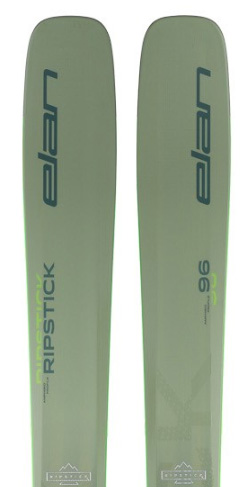 Capacity stage: Intermediate to superior
Capacity stage: Intermediate to superior
Dimensions: 133-96-114mm (182cm)
Different widths: 88, 102, 106, 108mm
What we like: Versatile, playful, and extra forgiving than the Enforcer 94 and Rustler 10 above.
What we don’t: Much less steady on hardpack and crud than the Enforcer and Rustler.
In terms of enjoyable and playfulness throughout all the mountain, few ship face-cramping grins higher than the Elan Ripstick 96. This can be a ski that likes to smear buttery turns in comfortable snow and might maintain its personal in boot-top powder (see additionally: Blizzard’s Rustler 10 above). Constructed with a light-weight wooden laminate and two carbon tubes in its core, the Ripstick affords energy and agility in an extremely mild bundle—mild sufficient, in actual fact, to double as a touring ski if you happen to go for a hybrid binding just like the Salomon Shift. Distinctive to the Ripstick, devoted left and proper skis are formed with camber on the within and rocker on the skin, which is what provides them such a buttery really feel by way of every flip.
As we hinted above, these skis carefully evaluate to the Blizzard Rustler, and like that ski, the Ripstick provides you playfulness and springiness at the price of stability on laborious snow and thru crud. Whereas these skis carve like a dream on comfortable groomers and spring corn, they will chatter in firmer circumstances. The Rustler is the heavier of the 2 and feels just a little extra planted basically, however the Ripstick will prevent $50 and is a boon in most circumstances—plus, it now is available in a 102-millimeter width that strains up extra carefully with the Rustler’s dimensions. The 96-millimeter model can be obtainable in a Black Version mannequin that incorporates a stiffer flex with twice the quantity of carbon as the usual skis, making them higher suited to superior to professional riders.
See the Elan Ripstick 96 See the Ladies’s Elan Ripstick 94
14. Rossignol Expertise 80 Carbon w/Xpress 11 GW Bindings ($650)
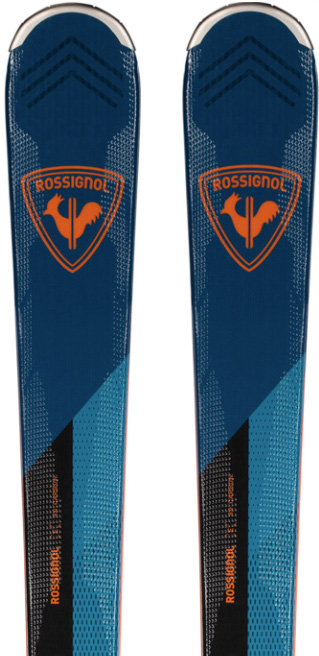 Capacity stage: Intermediate
Capacity stage: Intermediate
Dimensions: 125-80-113mm
Different width: 78mm
What we like: A frontside ski that may progress with you; first rate worth with the included bindings.
What we don’t: Very a lot an on-trail ski.
The entry-level Rossignol Expertise 78 Carbon has topped our newbie ski listing for just a few years due to its balanced and forgiving design, and the marginally wider 80 Carbon represents a modest step up in all-around efficiency. With a brief flip radius, the aforementioned 80-millimeter waist, and a light-weight paulownia and carbon construct, this ski is simple to handle whether or not you’re slashing corduroy or navigating noon chop. On the similar time, its rectangular sidewalls, directional rocker, and flat tail ship confidence-inspiring edge maintain and stability in firmer—and even dreaded icy—circumstances. The result’s a mix of clean flip initiation and surprisingly stable carving. Moreover, these skis include high-quality Look Xpress 11 GW bindings, which is a good bundle deal.
Whereas the Expertise 80 Carbon is a good ski for constructing frontside confidence, its unidirectional design and carving-specific form restrict its off-trail efficiency. With a flat tail, you get higher stability on hardpack however sacrifice float and the flexibility to slip simply by way of a flip (the slim waist doesn’t assist in powder, both). A wider ski with extra tail rocker just like the Atomic Bent 90 or K2 Mindbender 90C above will provide extra versatility to these in search of a real all-mountain design. All that mentioned—and regardless of being on the backside of our rankings—the Expertise 80 Carbon may simply be the perfect match for an intermediate-level skier who lives in an space with comparatively restricted snowfall or just plans to stay to the groomed stuff.
See the Rossignol Expertise 80 Carbon See the Ladies’s Expertise 80 Carbon
Intermediate Ski Comparability Desk
*Editor’s word: Dimensions, flip radius, and weight usually differ relying on the size of the ski, and we used the size closest to 180cm (apart from the ladies’s-specific 4FRNT MSP CC) for the sake of comparability above.
About Our Testing Course of
Intermediate skiers comprise a big portion of the market, which is why we kicked off this information in November 2023 to enhance our extra complete all-mountain skis round-up. Contributing editor and avid skier Alli Hartz put collectively our preliminary listing of 13 picks, drawing from years of expertise ski guiding and instructing avalanche programs all through the Pacific Northwest. Senior editor Chris Crossen joined the crew in 2024 and now oversees the information, contributing his experience as a lifelong backcountry and resort skier at present primarily based within the Lake Tahoe space. Our intensive community of freelancers helps fill within the gaps, making certain we cowl the complete gamut of riders and snow circumstances.
Our present lineup of 14 intermediate skis displays our ongoing testing experiences, firsthand information from testers and gear-savvy associates, and suggestions from the web snowboarding group. In deciding which skis make our listing, we use specs like dimensions and building to assist resolve which fashions to think about, then slim it down primarily based on components like stiffness, weight, and switch radius, with lots of the choices above placing a pleasant center floor to enchantment to a variety of skiers. We hit the slopes with as many choices as we are able to, evaluating on-snow efficiency traits like maneuverability, stability, responsiveness, and playfulness. Ideally, every ski we check is put by way of its paces in variable circumstances, from deep powder to icy groomers, with lots of our favorites capable of deal with most snow sorts. Because the market continues to evolve, we’ll you should definitely replace the listing above with our newest suggestions and findings.
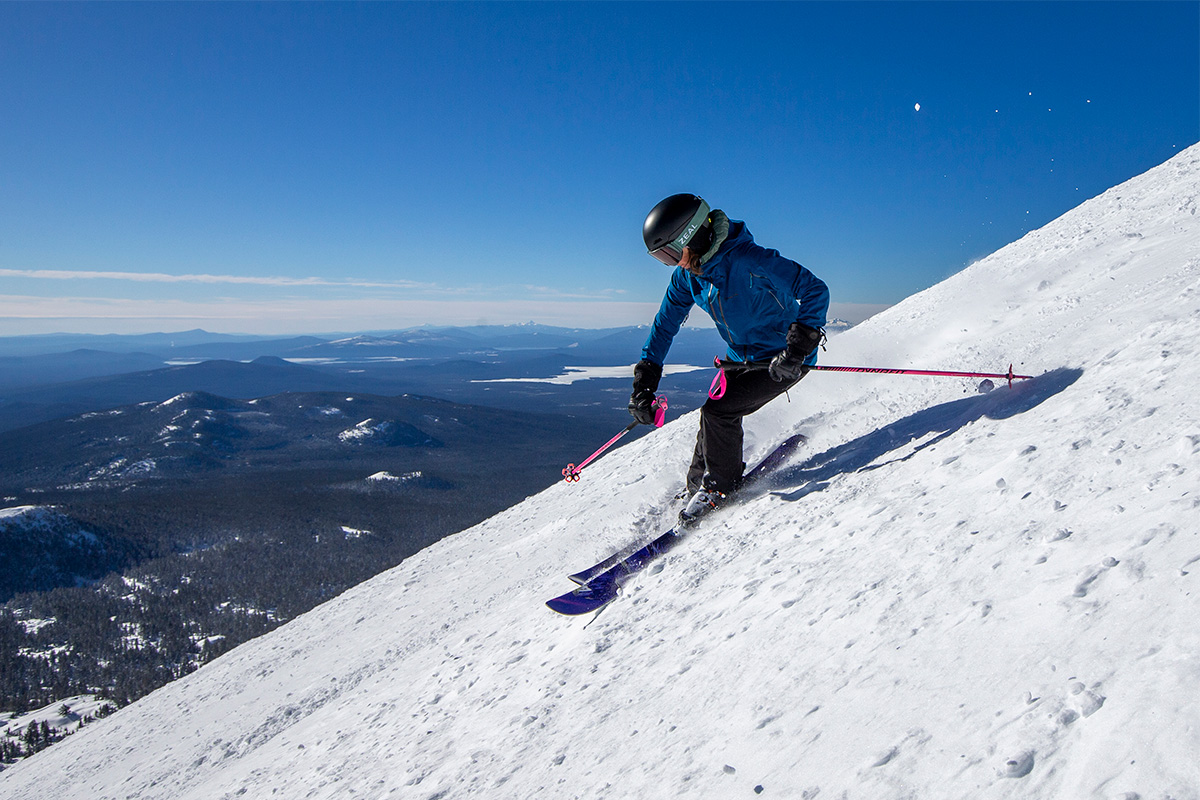
Intermediate Ski Shopping for Recommendation
Defining Capacity Degree: What’s an Intermediate Skier?
Usually, skier capability ranges are damaged down into 4 classes: newbie, intermediate, superior, and professional. Nevertheless, there aren’t clearly outlined distinctions between every grouping, and skiers are inclined to land someplace on a sliding scale. Inside the intermediate vary however nearer to the newbie finish of the spectrum, an “rising” intermediate skier is somebody who can hyperlink parallel turns of various sizes (quick, medium, lengthy) and ski in management on all inexperienced and most blue runs. This class also can embody skiers who’re assured on blue runs, use the pole planting method more often than not, and might piece their method down bump (mogul) strains.
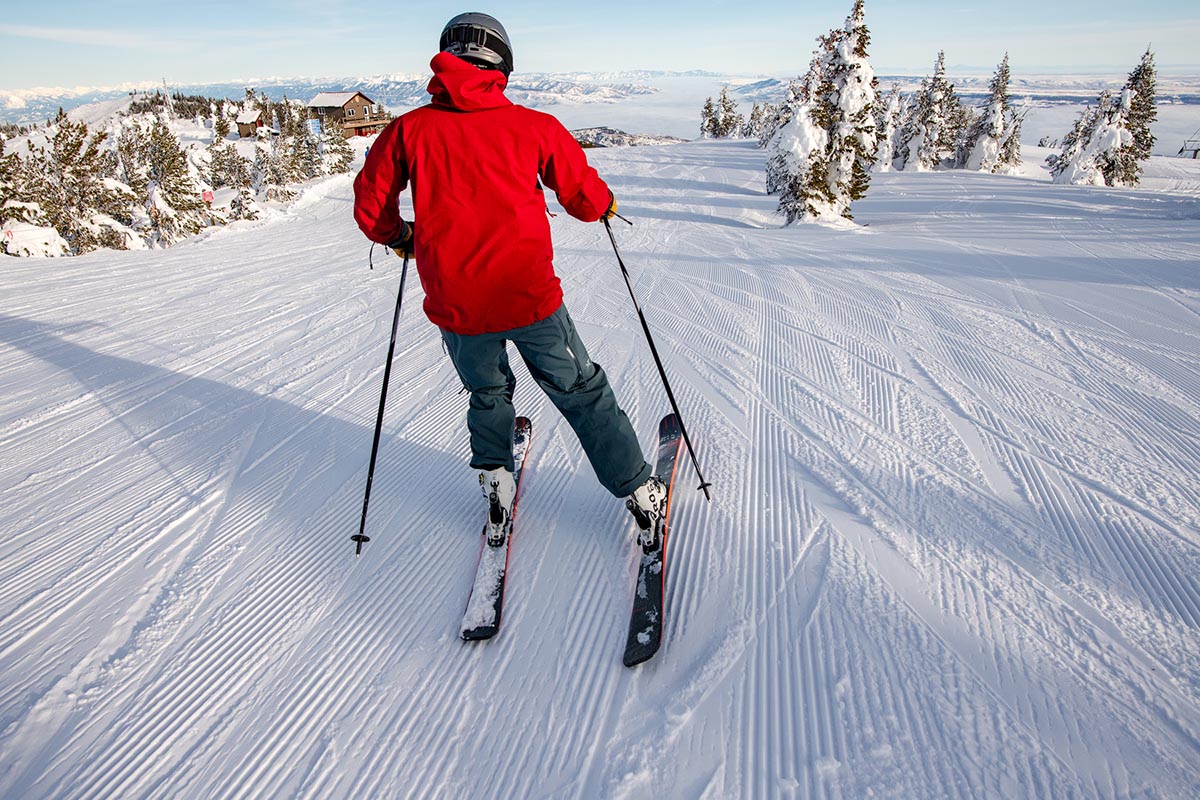
Shifting towards the extra superior finish of the spectrum, a “progressing” intermediate skier is somebody who can do all the above and in addition hyperlink parallel turns in shallow powder or different ungroomed snow, alter their method on steeper terrain or reasonable moguls, and successfully pole plant. For readability, we’ve included an “capability stage” spec within the product listings and comparability desk above. Rising intermediates will wish to keep away from a ski that reaches the professional finish of the dimensions (like Blizzard’s Rustler), as these designs will seemingly be too stiff and tougher to manage, whereas extra aggressive riders will wish to avoid a ski that crosses over into the newbie area.
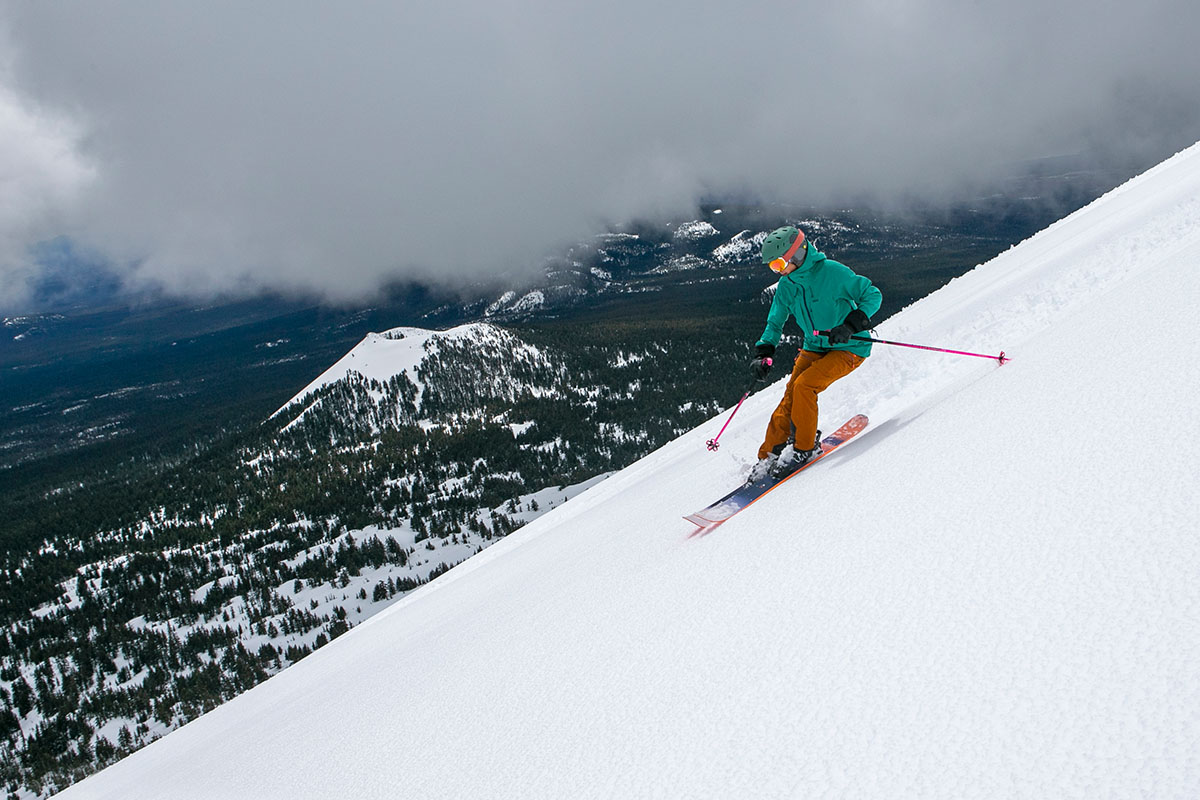
Intermediate-Degree Skis
Understandably, intermediates cowl portion of the resort-skiing public, and the intermediate ski class goals to fulfill skiers the place they’re and permit them to progress. Whereas newbie skis are comfortable, versatile, and really slim, any such ski gained’t really feel steady sufficient to an intermediate rider who’s linking parallel turns and studying to trip quicker whereas sustaining management. On the similar time, a ski that’s too heavy and inflexible will likely be difficult for an intermediate skier to handle, particularly as they enterprise into a greater diversity of terrain. Consequently, the very best intermediate skis usually land within the center and strike a stability that’s steady and highly effective but fairly mild, predictable, and simple to show. Their worth additionally lands within the mid-range, and you may count on an MSRP of roughly $500 to $800 (ski bindings are often not included).
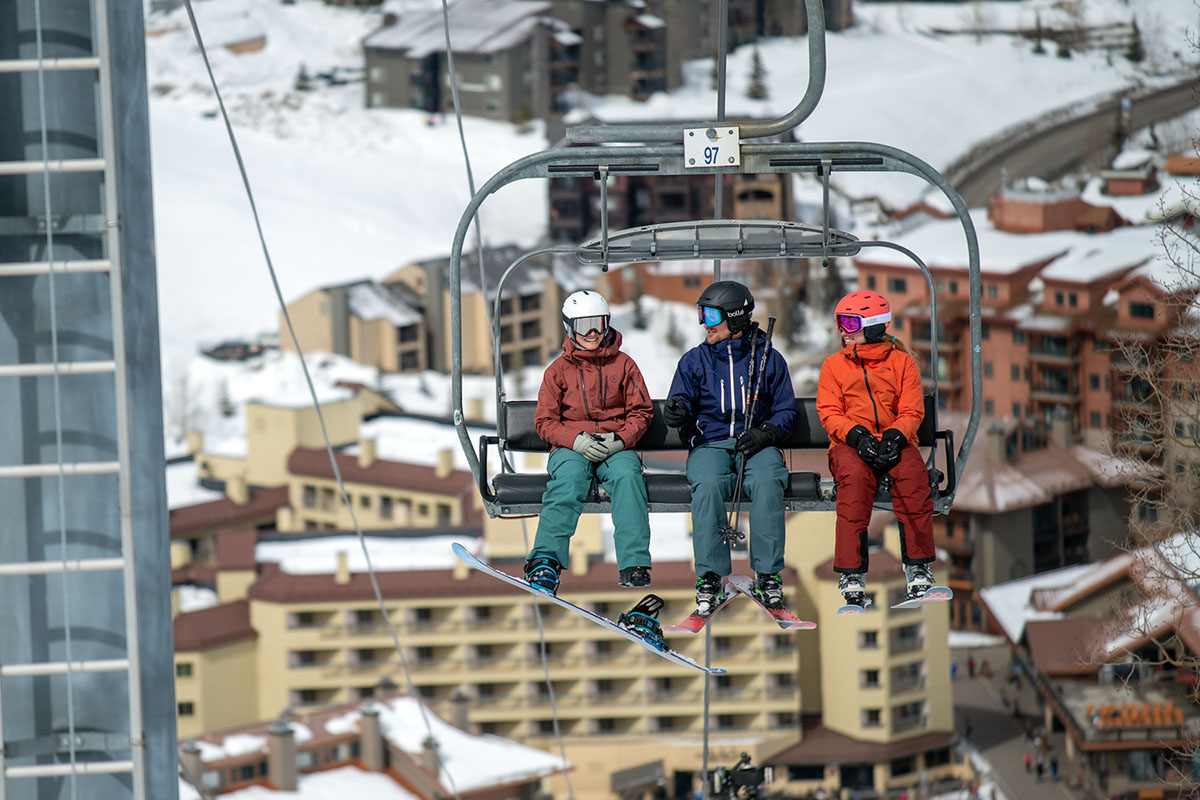
Ski Waist Width
Waist width is a measurement taken from the middle of the ski at its narrowest level and is a key factor in honing your search. Inside the intermediate ski market, you’ll discover choices starting from roughly 75 millimeters as much as about 110 (our picks above vary from 78 to 106mm underfoot), and all the pieces out of your snowboarding type to native terrain and snowfall will dictate your best vary. It’s additionally value noting that many widespread strains of skis are made in various widths. Atomic’s Bent assortment, for instance, is out there in 85, 90, 100, and 110-millimeter widths (plus the 120mm Bent Chetler powder ski), which covers almost the complete gamut of all-mountain types.
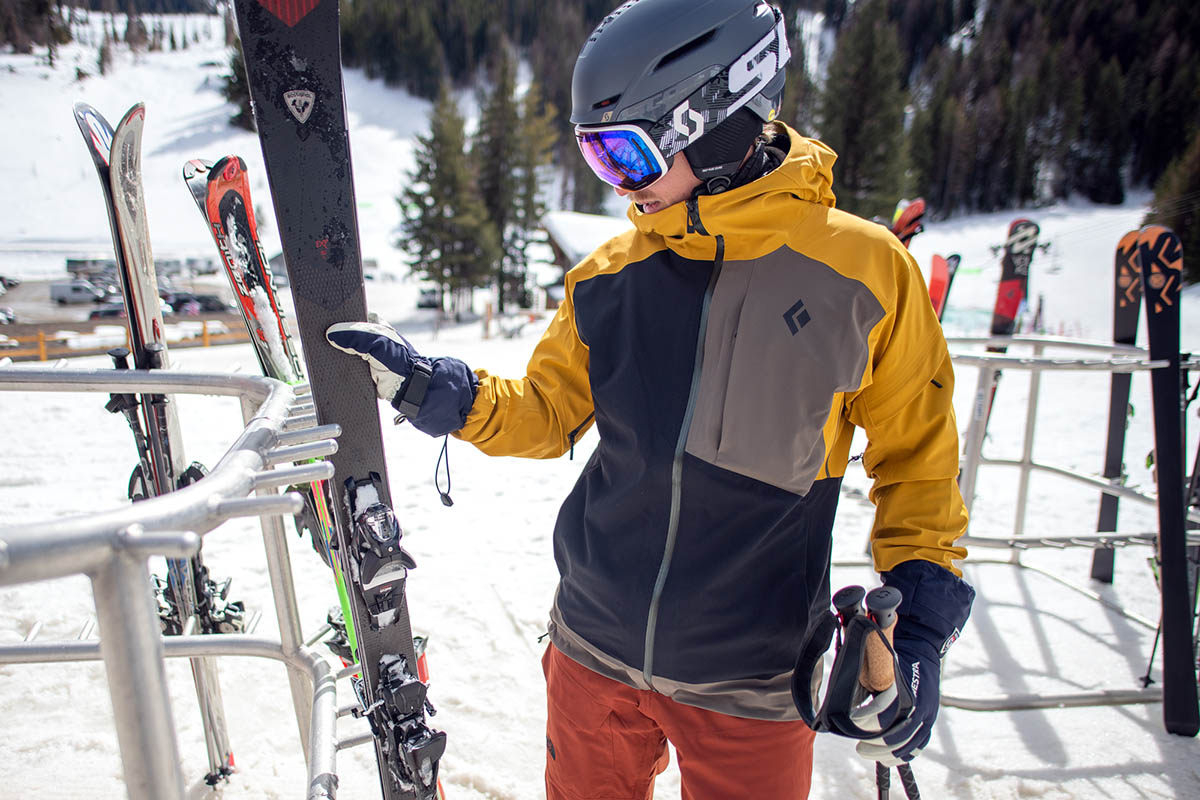
For width suggestions, skis on the decrease finish of the spectrum like Rossignol’s Expertise 80 Carbon (80mm underfoot) are finest suited to hardpack and agency snow circumstances. They’re usually straightforward to manage and grip effectively within the turns however are vulnerable to getting slowed down in powder. Getting into the 88- to 100-millimeter vary is the core of the intermediate-level all-mountain market: These skis hit a pleasant stability of flotation for reasonable snowfall (relying on the design, as much as round 6-10 in. of powder) with dependable on-piste efficiency. When you clear 100 millimeters on the waist, you get a borderline powder ski, which makes compromises in on-trail grip for glorious surfability and playfulness within the deep stuff. Beneath are some common suggestions primarily based on terrain and area. For a deeper take a look at subject, see our article on Selecting the Proper Ski Waist Width.
All-Mountain Groomer Skis: 75mm to 90mm
All-Mountain East Coaster: 80mm to 95mm
Coronary heart of the All-Mountain Vary: 88mm to 100mm
All-Mountain Rocky Mountains/West Coaster: 90mm to 105mm
All-Mountain Powder Skis: 100 to 110mm
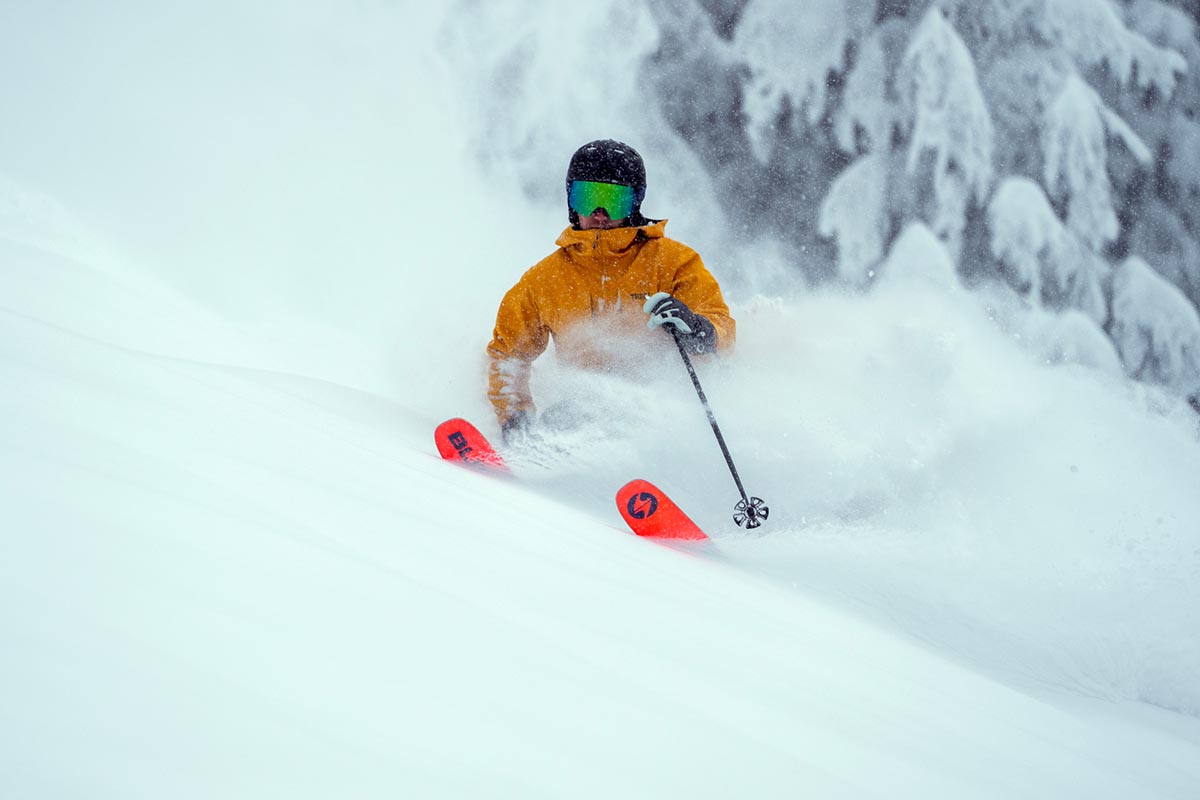
Ski Profile: Camber and Rocker
One other key indicator of efficiency is a ski’s profile, which is set by camber and rocker. Camber is a slight arc in a ski that peaks beneath the foot. Visually, that is the a part of the ski that’s raised off the snow if the unweighted ski is laid flat on the snow floor. The aim of camber is to assist skiers preserve edge management whereas carving turns. When the cambered ski turns into weighted in the course of the center of a flip, the ski’s edge grips the snow floor. Because the skier exits the flip, the camber helps the skier pop and propels them into the following flip. The extra camber a ski has, the extra it would pop the skier out of their flip. Nevertheless, an excessive amount of camber (with out the stability of rocker) will trigger skis to really feel flat and lifeless—and also will trigger them to nose-dive in comfortable or uneven snow.
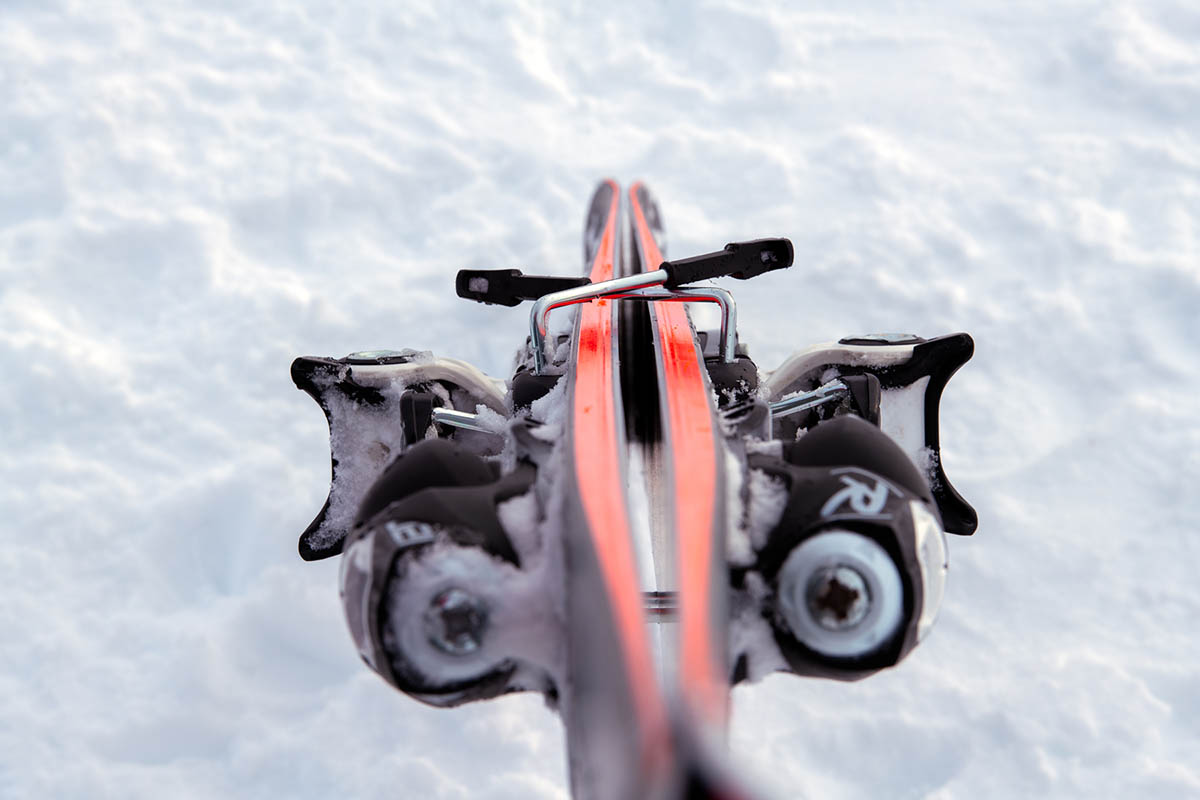
Rocker, additionally known as reverse-camber, is strictly that: camber in reverse, curving downward from the highest of the ski as a substitute of up from the underside. Today, rocker is usually present in a ski’s tip and tail, and it helps the skier provoke and exit the flip. The raised ends additionally assist the ski float in powder or punch by way of uneven snow. Alternatively, rocker shortens the quantity of the ski’s size that continues to be involved with the snow (that is known as a ski’s efficient edge). Due to this fact, the extra rocker a ski has, the extra it sacrifices edge grip.
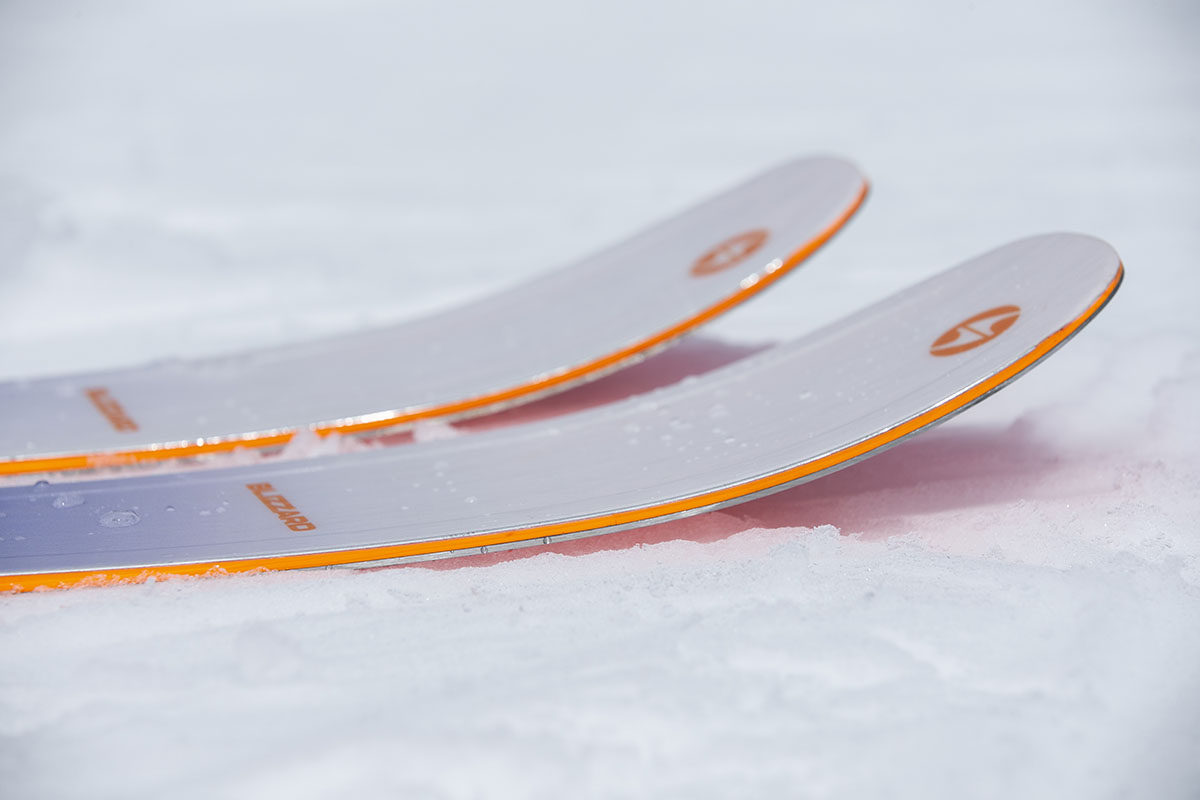
Inside the intermediate ski class, a lot of the skis you’ll discover will make the most of a mixture of camber and rocker. Skis which can be supposed for off-trail use may have extra rocker, whereas on-trail-focused designs have much less. When it comes to product listings, you’ll generally see a ski described as having rocker/camber or rocker/camber/rocker. The previous instance has rocker within the tip, camber in the course of the ski, and a flat tail (good for groomed runs and maximizing edge grip), whereas the latter has a raised tail (higher off path).
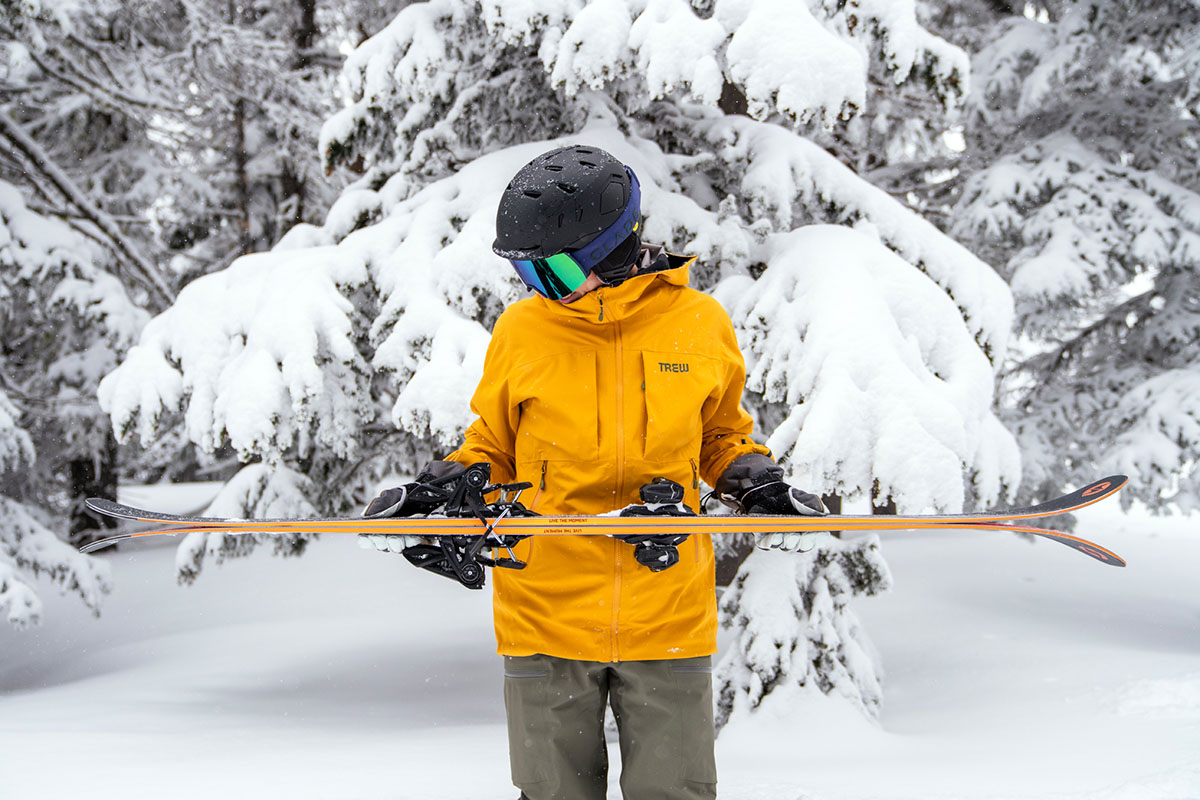
Flip Radius (Sidecut)
The rocker/camber part above covers the facet profile of the ski, whereas the flip radius (or sidecut) refers to its form. The measurement relies off the tip, waist, and tail dimensions and is listed in meters. The narrower a ski’s waist is relative to its tip and tail width, the deeper its sidecut and smaller its flip radius. For instance, skis just like the Dynastar M-Cross 78 (14m within the 172cm size) and Völkl Blaze 86 (15m on the waist within the 173cm size) are crafted for carving small, tight turns and have an hourglass form that’s wider on the tip and tail and far narrower on the waist. This enables for good responsiveness and nimble turning, making it a pleasant possibility for snowboarding bumps, as effectively.
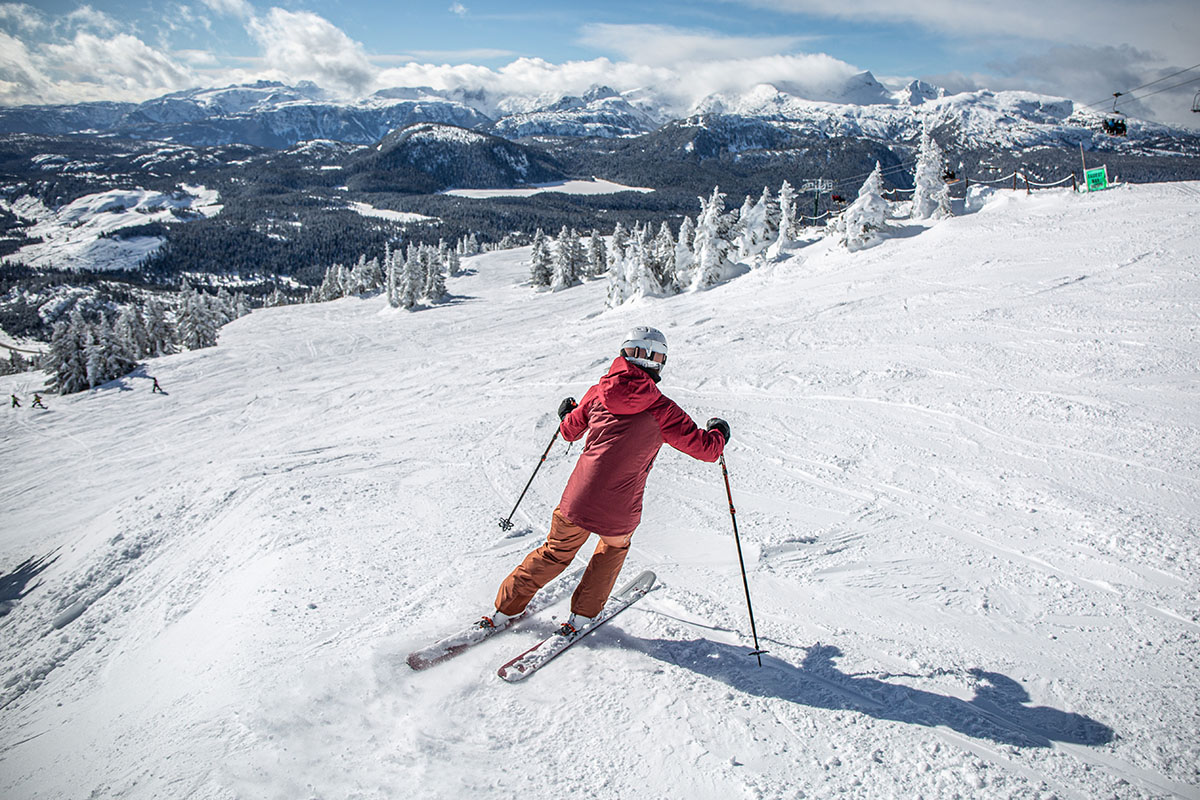
Alternatively, a ski with a extra uniform width throughout its tip, waist, and tail has a shallower sidecut and an extended flip radius. As radius will increase, skis will really feel extra steady bombing a run at excessive pace or by way of wider, sweeping turns. Fashions within the intermediate class usually have a brief to medium flip radius of round 13 to 19 meters, hitting a pleasant stability of maneuverability with management at pace.
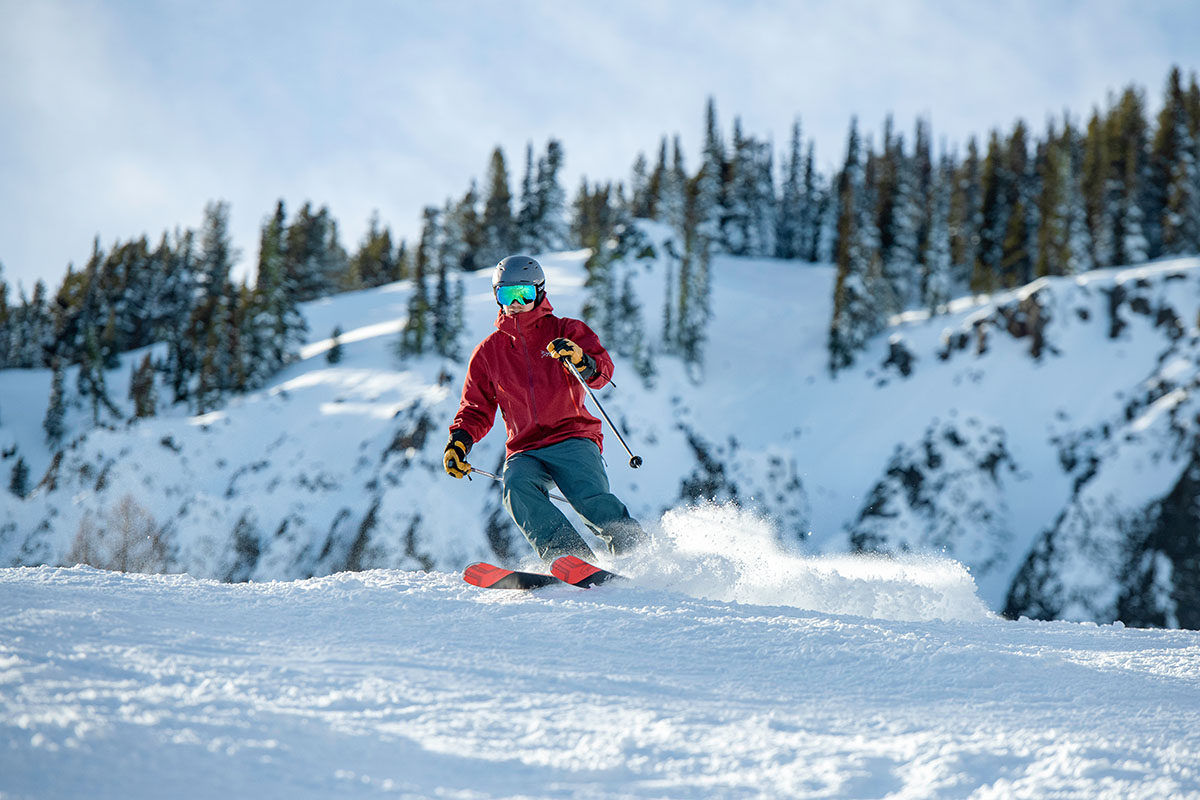
All that mentioned, it is essential to notice that sidecut doesn’t all the time completely replicate a ski’s character. Different components like rocker/camber and stiffness play a task, however the flip radius quantity is a useful piece of the puzzle. Beneath we listing how the assorted radii usually carry out.
Carving: Lower than 16 meters
All-around: 16-20 meters
Huge and sweeping turns: 20+ meters
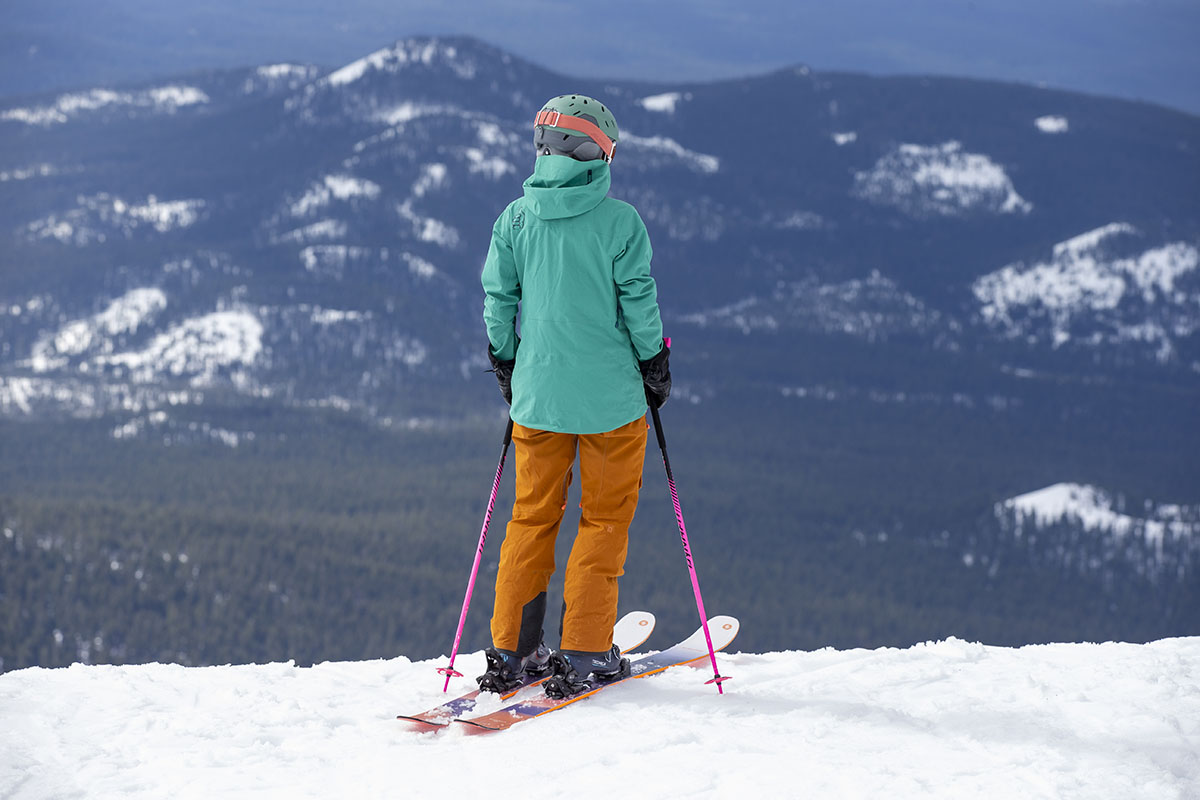
Ski Stiffness and Flex
A ski’s flex signifies how comfortable or inflexible the ski is thru its size and is a vital consideration for intermediate skiers. A ski that’s stiffer, extra inflexible, and fewer versatile will likely be extra steady at larger speeds and higher at blasting by way of chopped-up snow. That mentioned, most of these designs seemingly embody steel (often Titanal) within the building and are heavier and tougher for a lighter-weight or newbie/intermediate skier to show and management in variable circumstances. As such, burly skis usually fall into the superior or professional class, though there are some designs, just like the Nordica Enforcer 94, that work effectively with progressing and assured intermediates.
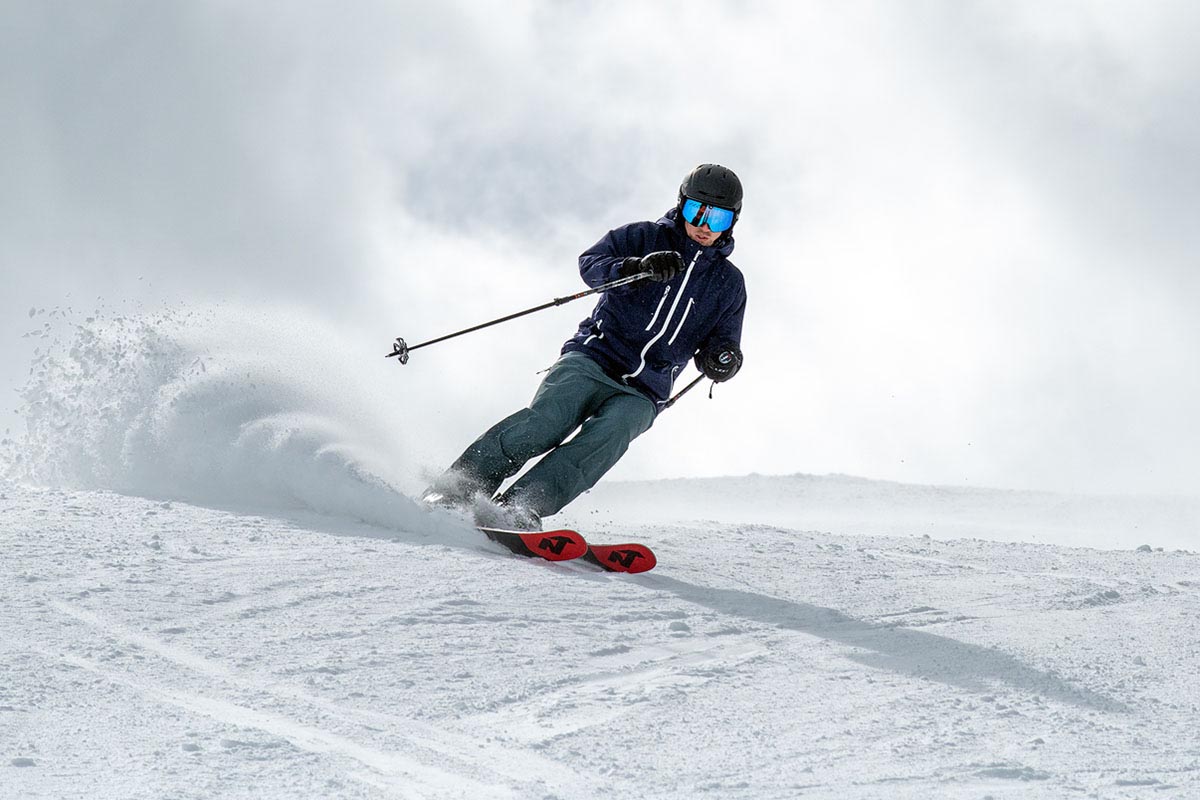
Most intermediate skiers, nonetheless, will likely be higher off with a design that lands within the center by way of flex. A softer, lighter, and extra versatile construct—nonetheless with sufficient spine to permit so that you can ramp up pace—affords stability of clean turn-in and management each on and off path. It gained’t have the identical top-end stability as a stiff ski, however widespread designs just like the Atomic Bent 90 and K2 Mindbender 90C hit this fascinating center floor.
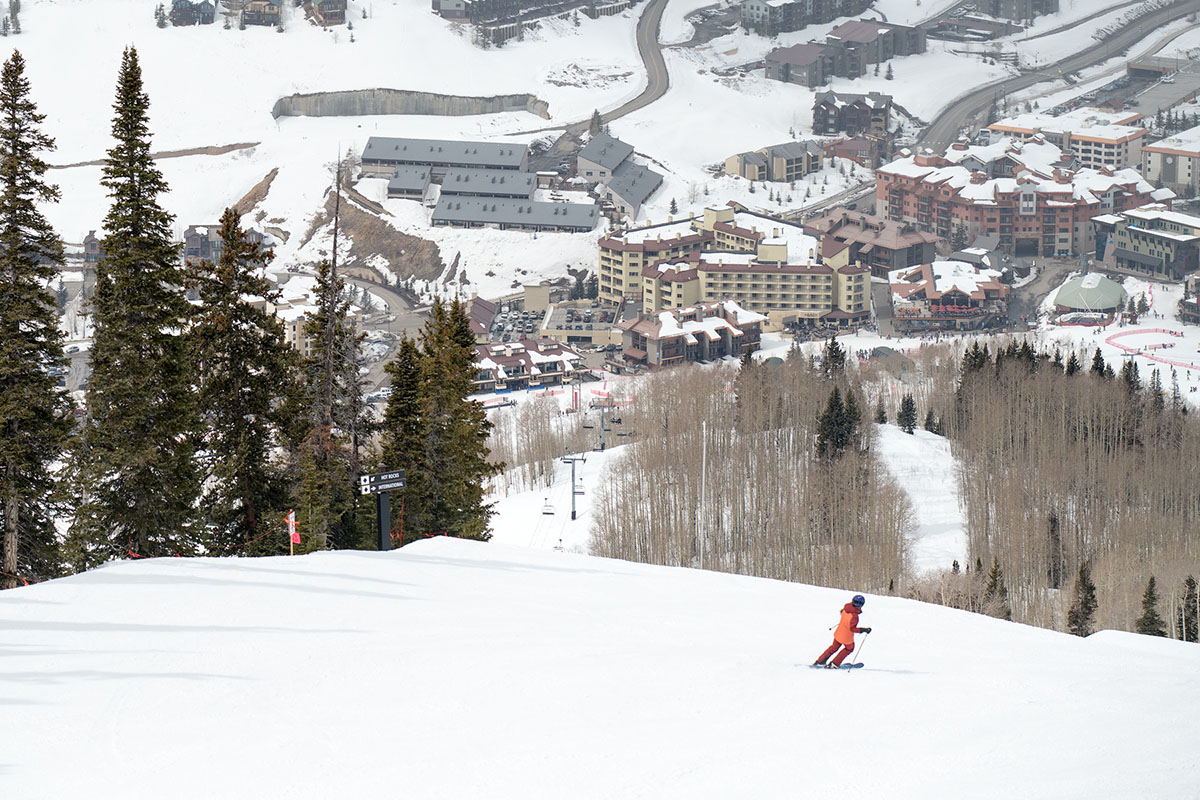
Ski Weight
A median intermediate-level ski weighs in at about 3.5 to 4 kilos (per ski in a mid-170cm size). To be used on the resort, weight is just not seemingly a deciding think about selecting skis, though a heavier—and sometimes wider—design logically may be tougher for lighter and fewer highly effective skiers to handle. Skis that pattern lighter will likely be simpler to drive, flip, and management in tight areas like bumps or bushes. Should you plan to dabble some within the backcountry—and probably put a pair of hybrid bindings like Salomon’s Shift in your skis—then weight turns into a a lot larger consideration. Many of the skis listed above are finest for downhill-only use, however one widespread hybrid resort/touring ski to think about is Völkl’s Blaze, which is available in at about 3 kilos 2 ounces per ski (within the 173cm size). However once more, a lot of the designs that made our listing fall roughly inside an analogous weight vary.
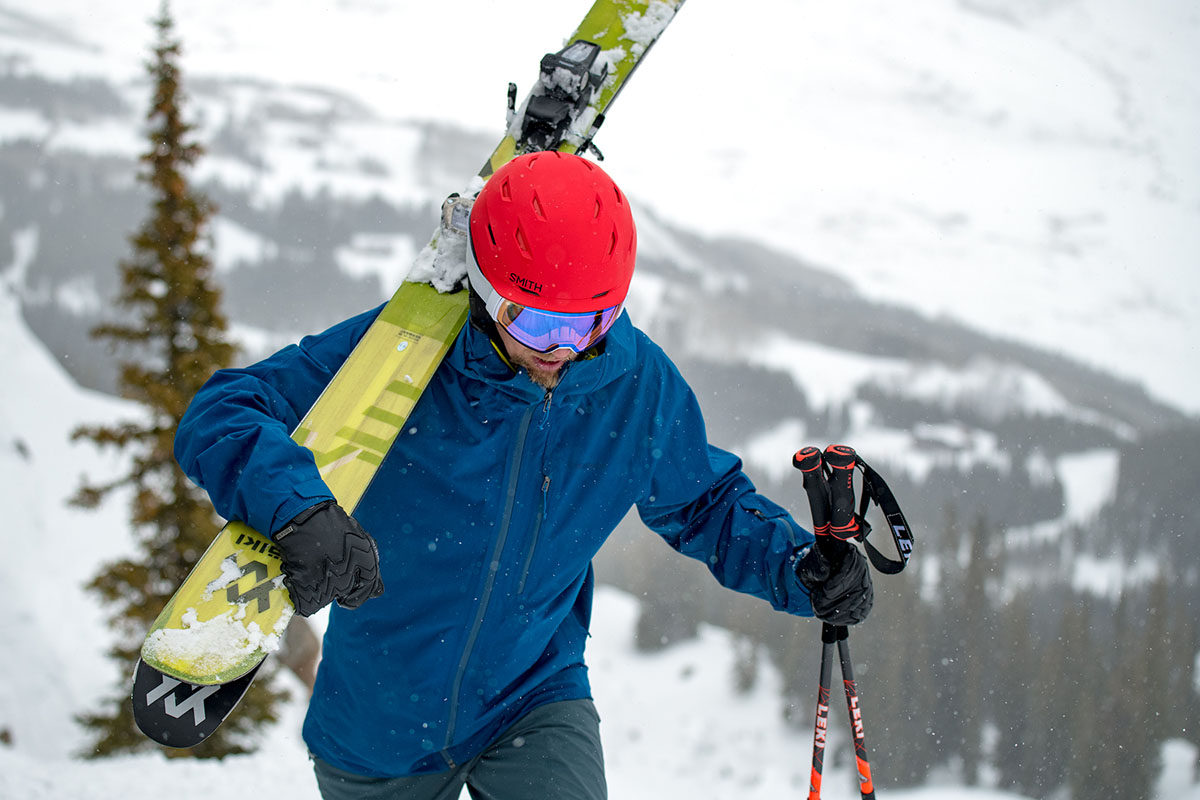
Ski Development: Supplies, Cores, and Laminates
Whereas it may be straightforward to get slowed down in techy language, a ski’s supplies and building would be the finest indicators of efficiency and sturdiness—and extra importantly, whether or not it is going to be the suitable ski for you. Beginning with the core, all the skis on our intermediate listing are created from a number of sorts of wooden. Poplar and aspen are two light-weight and high-energy woods generally used to cut back weight whereas including pop and snappy responsiveness. Like aspen and poplar, paulownia is one other kind of wooden that’s used to maintain a ski’s weight down with out sacrificing sturdiness. Denser woods like maple—which is present in J Skis’ The Allplay—will add to the ski’s energy, stability, and sturdiness.
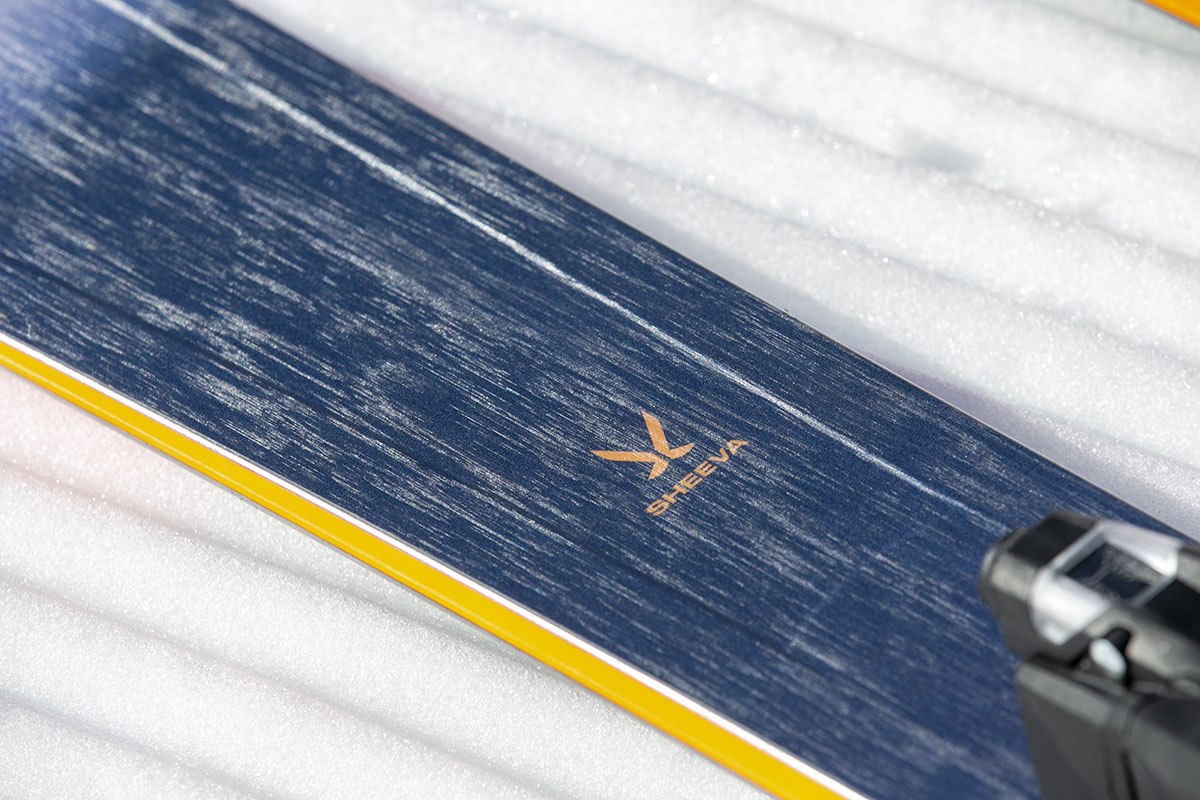
Along with wooden, ski producers use a wide range of metals and composite supplies (reminiscent of graphene, carbon, Titanal, or proprietary blends) to extend a ski’s energy and sturdiness, handle its total weight and flex, and in any other case enhance its efficiency. Whenever you’re researching your ski buy, pay shut consideration to the ski supplies and building and the way the ski producer describes the ski’s efficiency (utilizing phrases like poppy, snappy, responsive, and steady; or phrases reminiscent of mild, nimble, and forgiving). Higher but, reap the benefits of any alternative to demo skis with barely totally different supplies and constructions and see how they really feel underneath your ft. We’ve included insights from our testing within the descriptions above, however discovering the suitable pair of skis continues to be a private resolution, and it’s laborious to beat making an attempt them firsthand.
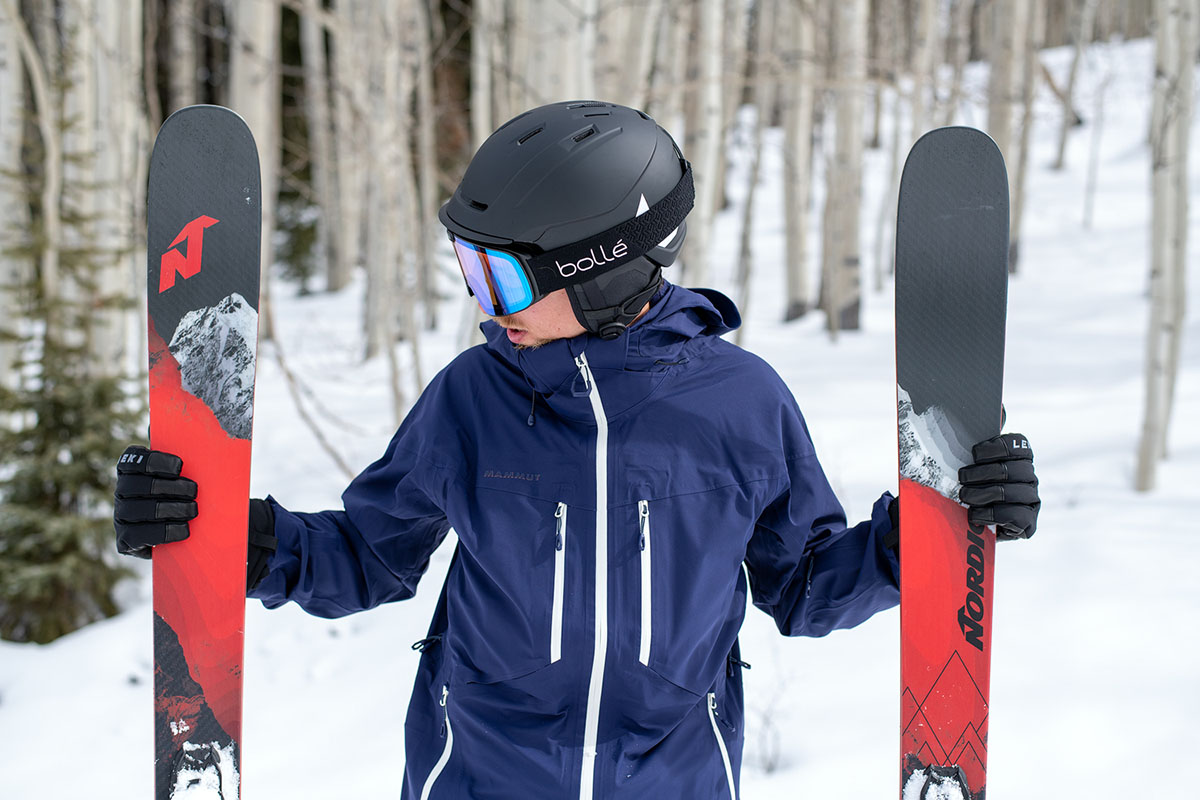
Selecting Ski Size
Most ski producers provide a dimension information that may be discovered on the product web page for a given ski. It’s usually primarily based on peak, weight, and skill stage. Should you’re between sizes, a shorter ski will likely be simpler to show however offers you much less stability at pace and fewer management in uneven or variable snow. Alternatively, if you find yourself on a ski that’s too lengthy, it is going to be laborious to show. For intermediate skiers, rule of thumb is to decide on a size that’s equal to or barely shorter than your peak. That mentioned, we advocate following the producer’s tips each time potential to decide on the very best size. And if you happen to’re simply in search of a common baseline of how lengthy a ski to get, Evo’s dimension chart software is a helpful useful resource.
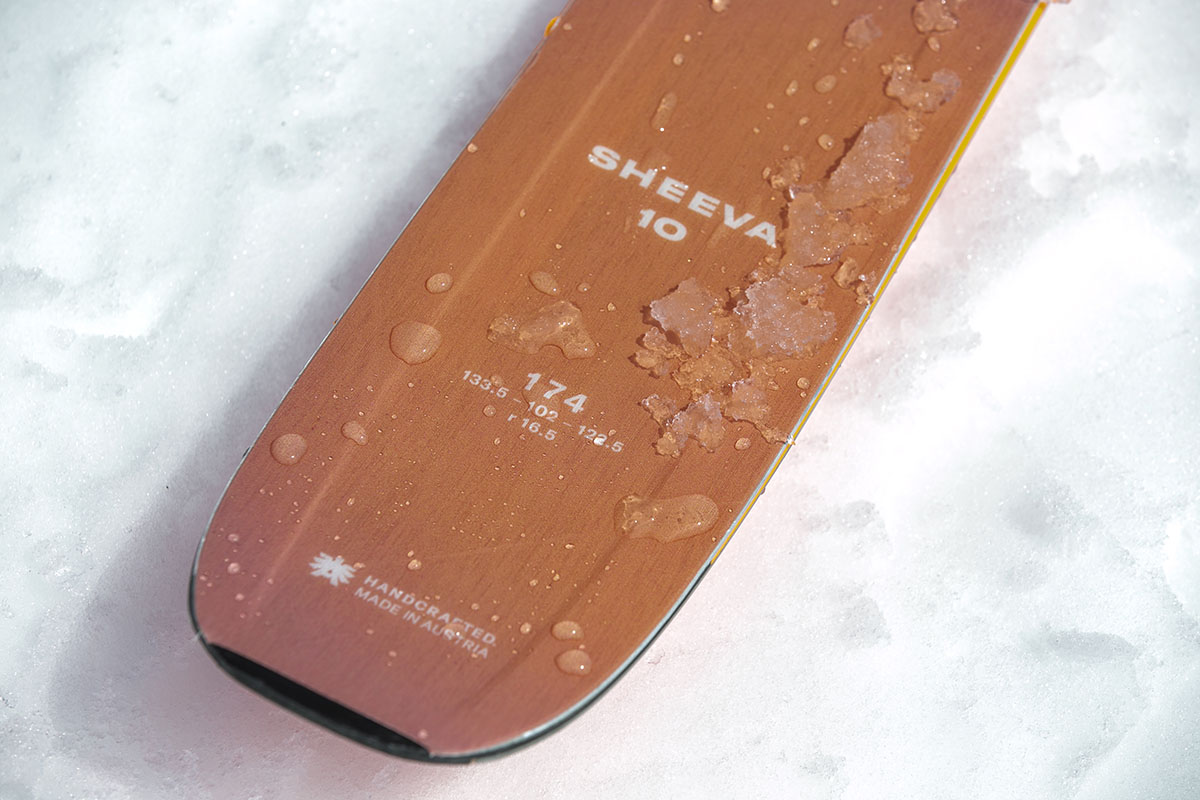
Ladies’s-Particular Skis
For a few years, a girls’s-specific ski merely was the lads’s model in a shorter size, softer flex, and totally different colorway—and with some fashions right now, that is nonetheless true. The expertise is evolving, nonetheless, and various ski producers now are taking extra superior design parts into consideration. One instance is that lots of right now’s girls’s-specific fashions have moved the advisable mounting factors barely ahead since this higher accommodates how a median lady balances on skis in comparison with a median man, together with a lighter total weight. Softer flexes nonetheless are widespread, however many manufacturers are actually making skis to accommodate hard-charging girls, together with the Nordica Santa Ana 92 on our listing above.
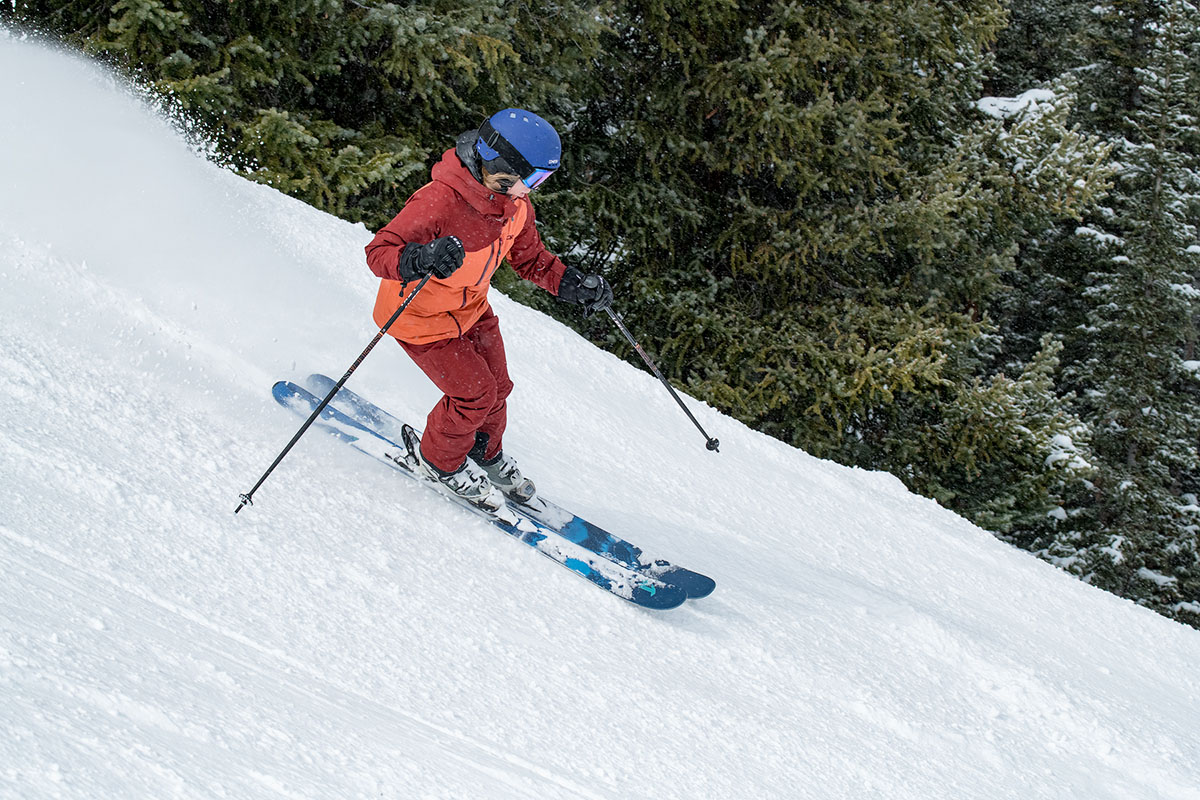
Which ski kind do you have to purchase? Needless to say the first model of a ski isn’t a “males’s” model however as a substitute unisex in nature. When a girls’s-specific model is out there, we’ve included a hyperlink to that possibility, as effectively. The selection comes down to private choice and, most significantly, the standard and traits of every mannequin. Some girls use unisex skis, some favor girls’s-specific fashions, and plenty of severe skiers have a quiver that features each. We advocate getting whichever ski suits and feels finest.
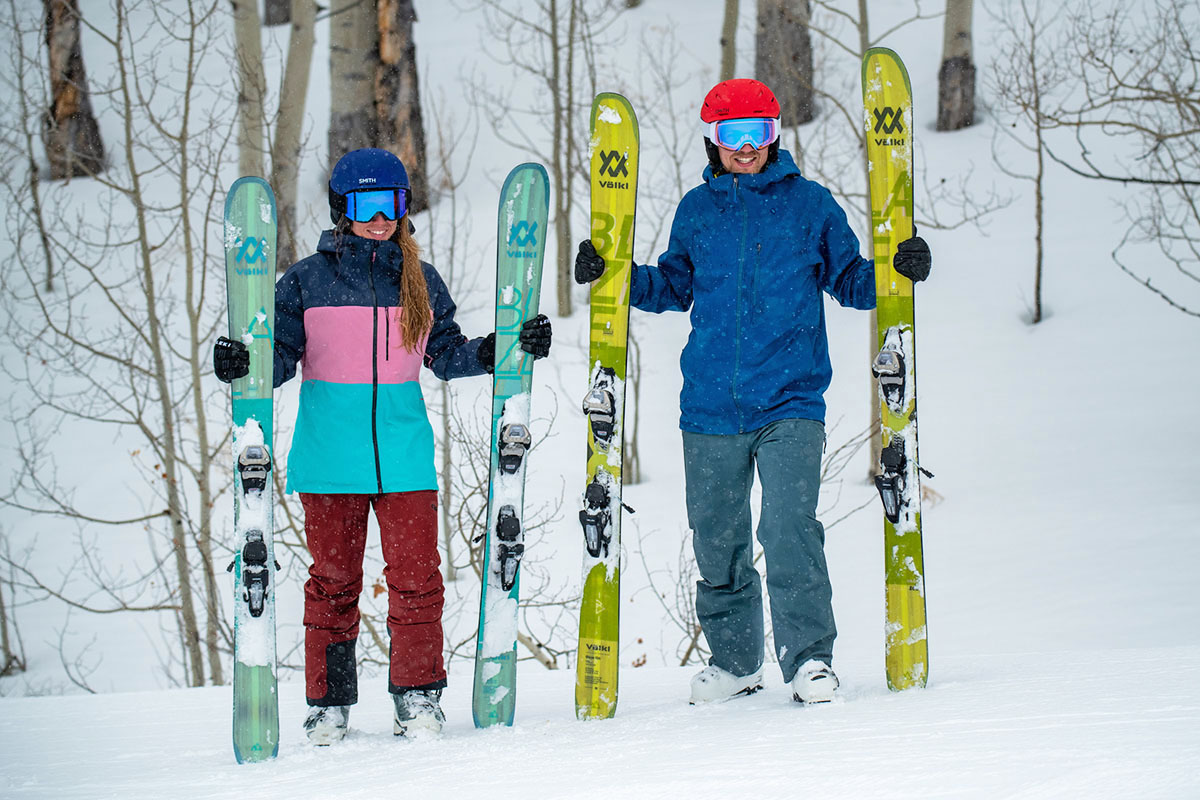
Boots and Bindings
When selecting skis, it’s essential to grasp how interconnected all of the parts of your setup are. Your boots, bindings, and skis all must be working in live performance to maximise the efficiency potential of your gear, in addition to your total enjoyment on the slopes. You probably have a boot that also matches your newbie ski/binding equipment and is kind of comfortable, you’ll battle to manage a stiffer and extra succesful set of intermediate skis. Alternatively, if you find yourself with a softer ski and pair it with a stiff boot, your boots are basically including nothing to your efficiency (and sure making your ft unnecessarily uncomfortable within the course of). That will help you nail down the very best match, check out our ski binding and downhill boot suggestions, which break all the pieces down based on ski circumstances and skill stage. And to make sure each items will work seamlessly collectively, try our Ski Boot and Binding Compatibility Information.
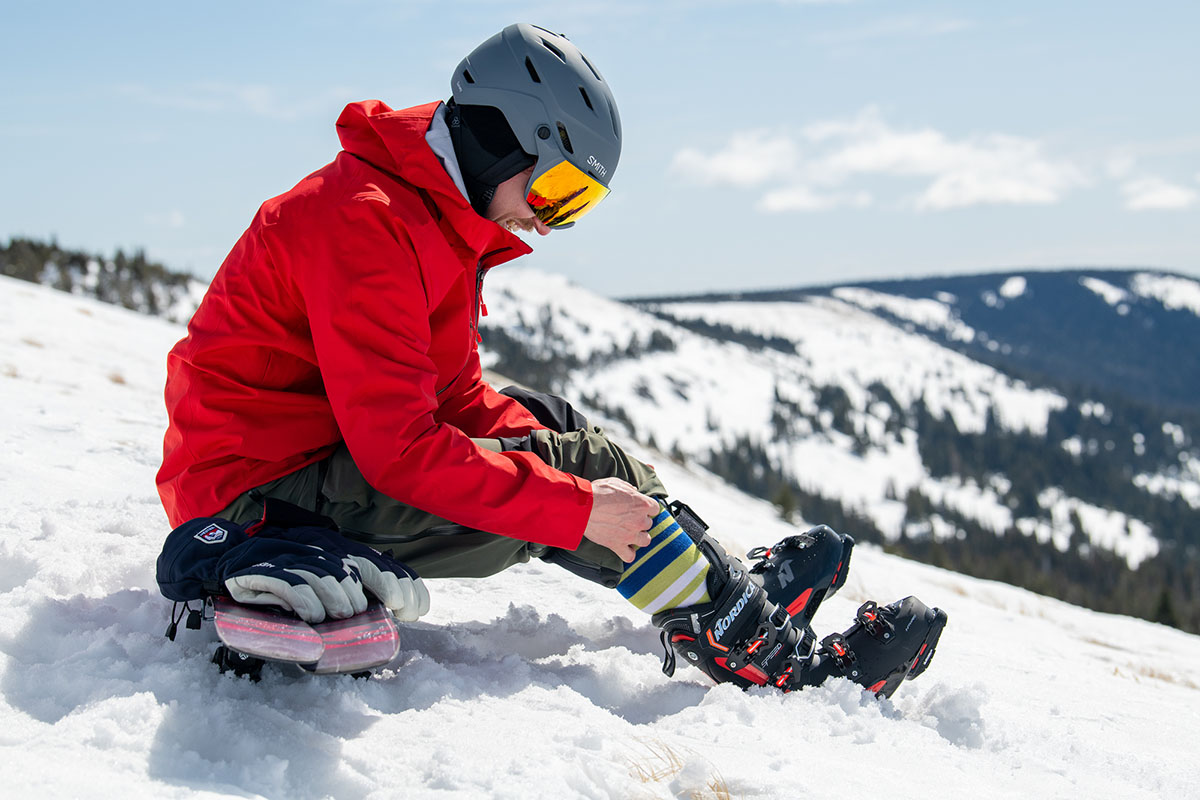
Ordering Skis On-line
It goes with out saying that buying a pair of skis is a big funding and one which requires a great deal of analysis. Ideally, you’ll have an opportunity to get your palms on the skis (and hopefully even demo them) earlier than taking the plunge, however that isn’t a actuality for everybody. The excellent news is that ordering on-line is a fairly seamless course of as of late, with most main retailers providing free and surprisingly quick delivery. Many even have affordable return insurance policies do you have to order the unsuitable dimension, though it’s essential to do your analysis forward of time—most websites require the skis to be unmounted and of their authentic packaging with a purpose to qualify for a full refund.
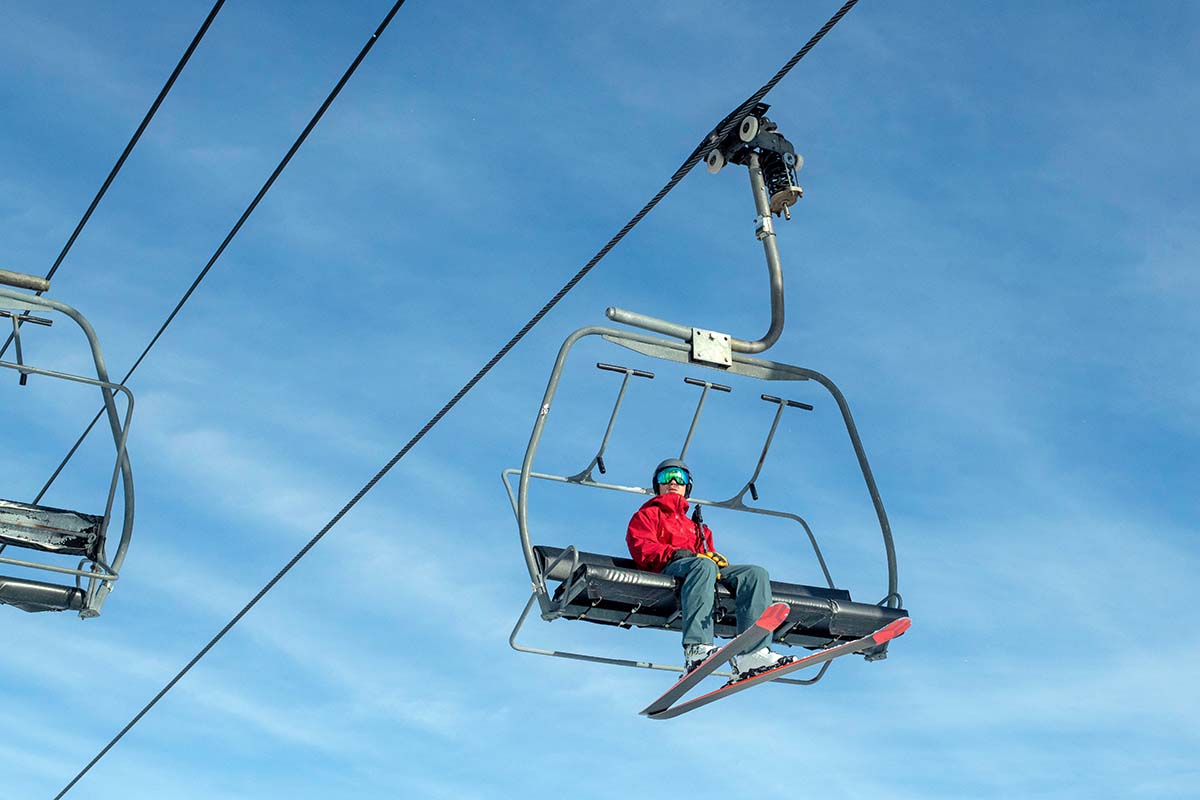
When you get your skis, you’ll have to have your bindings mounted. Nearly any ski store will do the give you the results you want, with the typical value starting from about $70 to $100+. Lots of REI’s 180+ shops even have a ski store with good reductions on mounting providers. Costs differ by retailer, however the fee on the flagship in Seattle this season is $105 for an alpine/touring mounting ($55 for an built-in ski/binding system). Importantly, members get 20% off store providers. Evo and Backcountry additionally provide mounting providers at their shops, though they’re few and much between in comparison with REI (you possibly can see an inventory of Backcountry’s retail places right here and Evo’s shops right here).
Again to Our Prime Intermediate Ski Picks Again to Our Intermediate Ski Comparability Desk






